
- Saint of the Day

Saint Martin of Tours
- November 11
- Franciscan Media
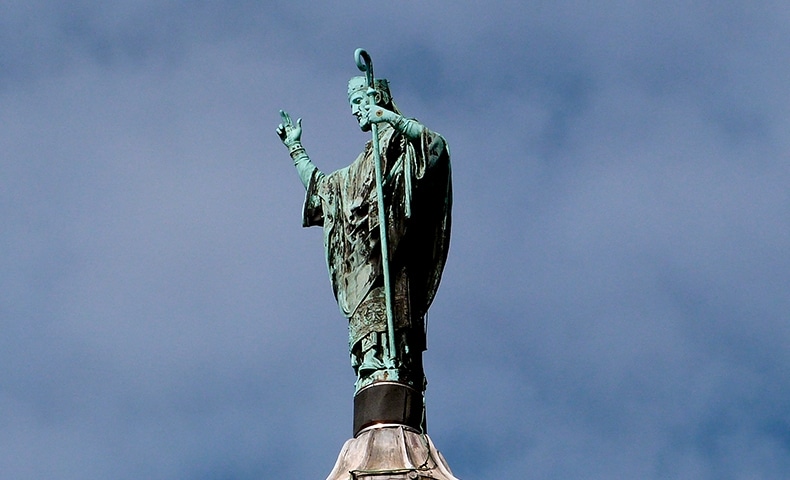
Image: Statue of Saint Martin of Tours on the dome of the Basilica of Saint Martin of Tours | photo by ZohaStel
Saint of the day for november 11, (c. 316 – november 8, 397).
Saint Martin of Tours’ Story
A conscientious objector who wanted to be a monk; a monk who was maneuvered into being a bishop; a bishop who fought paganism as well as pleaded for mercy to heretics—such was Martin of Tours, one of the most popular of saints and one of the first not to be a martyr.
Born of pagan parents in what is now Hungary, and raised in Italy, this son of a veteran was forced at the age of 15 to serve in the army. Martin became a Christian catechumen and was baptized when he was 18. It was said that he lived more like a monk than a soldier. At 23, he refused a war bonus and told his commander: “I have served you as a soldier; now let me serve Christ. Give the bounty to those who are going to fight. But I am a soldier of Christ and it is not lawful for me to fight.” After great difficulties, he was discharged and went to be a disciple of Hilary of Poitiers.
He was ordained an exorcist and worked with great zeal against the Arians. Martin became a monk, living first at Milan and later on a small island. When Hilary was restored to his see following his exile, Martin returned to France and established what may have been the first French monastery near Poitiers. He lived there for 10 years, forming his disciples and preaching throughout the countryside.
The people of Tours demanded that he become their bishop. Martin was drawn to that city by a ruse—the need of a sick person—and was brought to the church, where he reluctantly allowed himself to be consecrated bishop. Some of the consecrating bishops thought his rumpled appearance and unkempt hair indicated that he was not dignified enough for the office.
Along with Saint Ambrose, Martin rejected Bishop Ithacius’s principle of putting heretics to death—as well as the intrusion of the emperor into such matters. He prevailed upon the emperor to spare the life of the heretic Priscillian. For his efforts, Martin was accused of the same heresy, and Priscillian was executed after all. Martin then pleaded for a cessation of the persecution of Priscillian’s followers in Spain. He still felt he could cooperate with Ithacius in other areas, but afterwards his conscience troubled him about this decision.
As death approached, Martin’s followers begged him not to leave them. He prayed, “Lord, if your people still need me, I do not refuse the work. Your will be done.”
Martin’s worry about cooperation with evil reminds us that almost nothing is either all black or all white. The saints are not creatures of another world: They face the same perplexing decisions that we do. Any decision of conscience always involves some risk. If we choose to go north, we may never know what would have happened had we gone east, west, or south. A hyper-cautious withdrawal from all perplexing situations is not the virtue of prudence; it is in fact, a bad decision, for “not to decide is to decide.”
Saint Martin of Tours is a Patron Saint of:
Horses Soldiers South Africa

Sign Up for Our Daily Newsletter
Includes Saint of the Day, Minute Meditations, and Pause + Pray.

Our Mission
- Phone: (513) 241-5615
- Address: 28 W. Liberty St. Cincinnati, OH 45202
Writer’s Guidelines Privacy Policy Post a Prayer Request Donor Portal Our Mission
Recent Articles
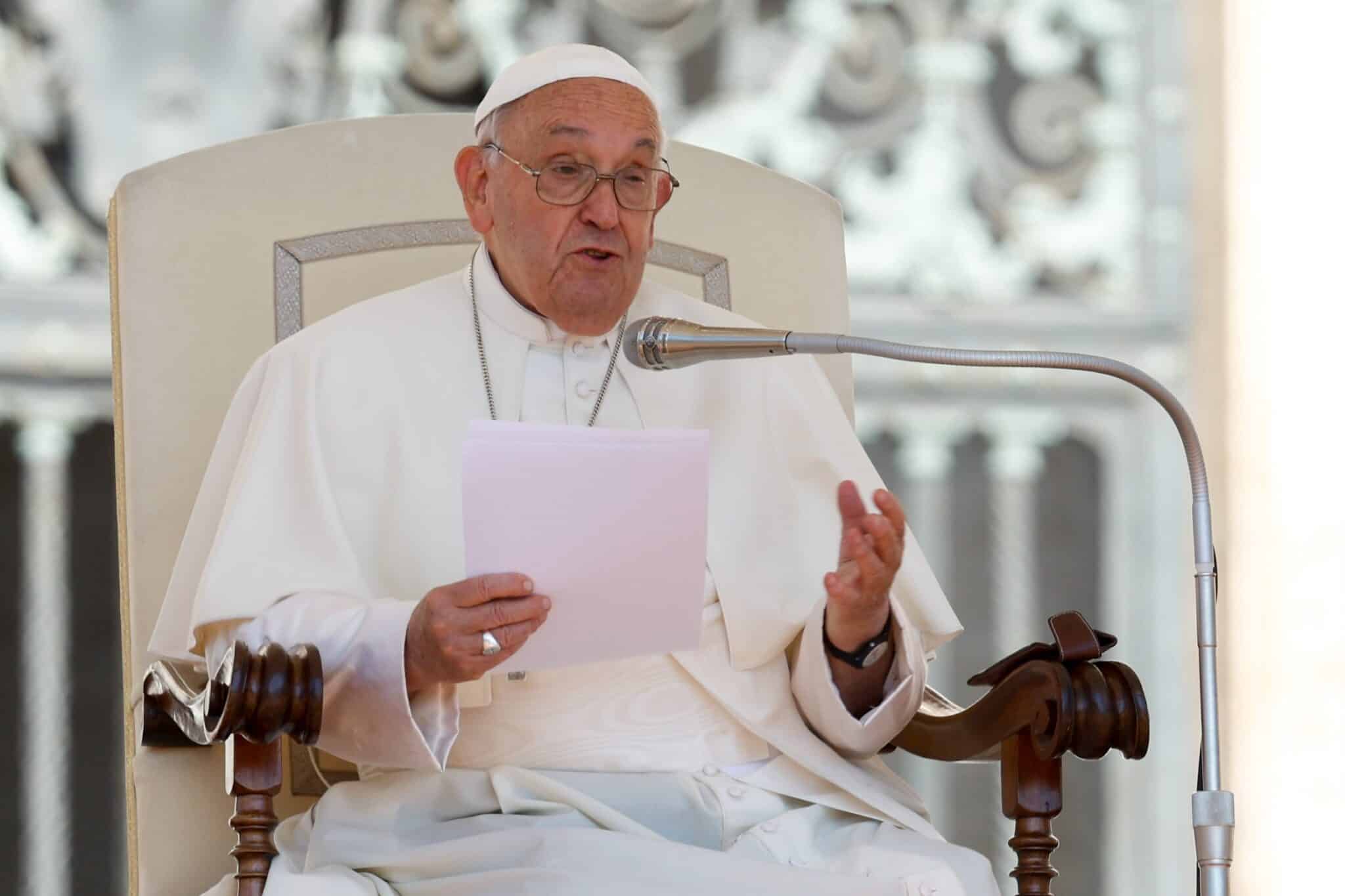
Pope preparing document on Sacred Heart of Jesus to renew church, world

Love Pours Forth

I Want the Light

Biden signs executive order temporarily shutting down asylum requests

The Place You Call Holy

Who Was Saint Martin of Tours (a Patron Saint of Horses)?
- Beliefs and Teachings
- Holy Days and Holidays
- Christianity Origins
- The New Testament
- The Old Testament
- Practical Tools for Christians
- Christian Life For Teens
- Christian Prayers
- Inspirational Bible Devotions
- Denominations of Christianity
- Christian Holidays
- Christian Entertainment
- Key Terms in Christianity
- Latter Day Saints
Whitney Hopler is a writer and editor who has covered faith since 1994. She is the author of the book "Wake Up to Wonder."
- B.A., English, George Mason University
Saint Martin of Tours (popularly known in Spanish-speaking nations as "San Martín Caballero" for his association with horses)
316 - 397 in ancient Upper Pannonia (now Hungary, Italy, Germany and ancient Gaul (now France
November 11th in some churches and November 12th in others
Patron Saint of:
Horses, equestrians, calvary soldiers, beggars, geese, poor people (and those who help them), alcoholics (and those who help them), people who run hotels, and people who make wine
Famous Miracles:
Martin was known to have many different prophetic visions that came true. People have also attributed many miracles of healing to him, both during his lifetime (when God reportedly healed a leper after Martin kissed him) and afterward, when people prayed to Martin in heaven to pray for their healing on Earth. During his lifetime, reportedly, three people were raised back to life from the dead (all in separate incidents) after Martin prayed for them.
A famous miracle related to horses in Martin's life happened when he was a soldier in the army in ancient Gaul (now France) riding a horse through a forest and encountered a beggar. Martin didn't have any money with him, so since he noticed that the beggar didn't have enough clothes to keep him warm, he used his sword to cut the heavy cloak that he was wearing in half to share with the beggar. Later, Martin had a miraculous vision of Jesus Christ wearing the cloak.
Martin spent a lot of time talking with pagans about Christianity, trying to inspire them to worship the Creator rather than the creation. One time he convinced a group of pagans to cut down a tree that they had worshiped while Martin stood directly in the path of it falling, praying that God would miraculously rescue him to show the pagans that God's power was at work. The tree then miraculously swerved in mid-air to miss Martin when it fell to the ground, and all of the pagans who witnessed that event put their trust in Jesus Christ.
An angel once miraculously helped Martin convince an emperor in Germany to free a prisoner who had been condemned to death. The angel appeared to the emperor to announce that Martin was on his way to visit and ask the emperor to free the prisoner. After Martin arrived and presented his request, the emperor agreed because of the angel's miraculous appearance to him, which convinced him that it was important to help.
Martin was born in Italy to pagan parents but discovered Christianity as a teen and converted to it. He served in the army of ancient Gaul (now France) as a teen and young man.
Through the years, Martin was persecuted for his Christian beliefs but remained faithful to his convictions. He often began relationships with pagans (like his parents were) to tell them about Jesus Christ, and some of them (including his mother) converted to Christianity. Martin destroyed pagan temples and built churches on the sites of where the temples had been.
After the Bishop of Tours died, Martin reluctantly became the next bishop in 372 because he was the most popular choice of the people in the area. He founded a monastery called Marmoutier, where he focused on prayer and helping people in need until his death in 397.
- Introduction to the Catholic Religion: Beliefs, Practices, and History
- Who Was Saint Eligius (A Patron Saint of Horses)?
- St. Roch, Patron Saint of Dogs
- St. Gall, a Patron Saint of Birds
- Biography of Brigid of Kildare, Irish Patron Saint
- Biography of St. Francis of Assisi, the Patron Saint of Animals
- St. Mark the Evangelist: Bible Author and Patron Saint
- Saint Patrick's Life and Miracles
- Saint Valentine's Story
- St. Mary Magdalene, Patron Saint of Women
- Superhero Saints: Bilocation, the Power to Appear in Two Places
- Saint Paul the Apostle
- Who Was Saint Gemma Galgani?
- Who Is the Virgin Mary?
- Saint John the Baptist, Patron Saint of Conversion
- Who Was Saint Thomas the Apostle?

- Catholicism
- Religious Catalogue
- Give Monthly
- 1-800-447-3986
- [email protected]
- See of Peter
- Daily Mass and Readings
- Seasons and Feast Days
- Traditional Latin Mass
- Prayer Requests
- EWTN News Nightly
- EWTN Pro-Life Weekly
- EWTN News In Depth
- The World Over
- National Catholic Register
- Catholic News Agency
- Weekly Schedule
- Channel Finder
- Listen Live
- Audio Archive
- Monthly Schedules
- Podcast Central
- Galaxy 33 Transmission Plan
- SW Frequency Guide
- SW Monitoring Form
- Frequently Asked Questions
- EWTN Religious Catalogue
- My Giving Account
- Ways to Give
- Mother Angelica
- Online Learning Series
- EWTN Everywhere
- Media Missionaries
- Privacy Policy
- International Satellite Feeds
St. Martin of Tours

ST. MARTIN OF TOURS
Feast: November 11
Bishop; born at Sabaria (today Steinamanger in German, or Szombathely in Hungarian), Pannonia (Hungary), about 316; died at Candes, Touraine, most probably in 397. In his early years, when his father, a military tribune, was transferred to Pavia in Italy, Martin accompanied him thither, and when he reached adolescence was, in accordance with the recruiting laws, enrolled in the Roman army. Touched by grace at an early age, he was from the first attracted towards Christianity, which had been in favour in the camps since the conversion of Emperor Constantine. His regiment was soon sent to Amiens in Gaul, and this town became the scene of the celebrated legend of the cloak. At the gates of the city, one very cold day, Martin met a shivering and half-naked beggar. Moved with compassion, he divided his coat into two parts and gave one to the poor man. The part kept by himself became the famous relic preserved in the oratory of the Frankish kings under the name of "St. Martin's cloak". Martin, who was still only a catechumen, soon received baptism, and was a little later finally freed from military service at Worms on the Rhine. As soon as he was free, he hastened to set out to Poitiers to enroll himself among the disciples of St. Hilary, the wise and pious bishop whose reputation as a theologian was already passing beyond the frontiers of Gaul. Desiring, however, to see his parents again, he returned to Lombardy across the Alps. The inhabitants of this region, infested with Arianism, were bitterly hostile towards Catholicism, so that Martin, who did not conceal his faith, was very badly treated by order of Bishop Auxentius of Milan, the leader of the heretical sect in Italy. Martin was very desirous of returning to Gaul, but, learning that the Arians troubled that country also and had even succeeded in exiling Hilary to the Orient, he decided to seek shelter on the island of Gallinaria (now Isola d'Albenga) in the middle of the Tyrrhenian Sea.
As soon as Martin learned that an imperial decree had authorized Hilary to return to Gaul, he hastened to the side of his chosen master at Poitiers in 361, and obtained permission from him to embrace at some distance from there in a deserted region (now called Liguge) the solitary life that he had adopted in Gallinaria. His example was soon followed, and a great number of monks gathered around him. Thus was formed in this Gallic Thebaid a real laura, from which later developed the celebrated Benedictine Abbey of Liguge. Martin remained about ten years in this solitude, but often left it to preach the Gospel in the central and western parts of Gaul, where the rural inhabitants were still plunged in the darkness of idolatry and given up to all sorts of gross superstitions. The memory of these apostolic journeyings survives to our day in the numerous local legends of which Martin is the hero and which indicate roughly the routes that he followed. When St. Lidorius, second Bishop of Tours, died in 371 or 372, the clergy of that city desired to replace him by the famous hermit of Liguge. But, as Martin remained deaf to the prayers of the deputies who brought him this message, it was necessary to resort to a ruse to overcome his resistance. A certain Rusticius, a rich citizen of Tours, went and begged him to come to his wife, who was in the last extremity, and to prepare her for death. Without any suspicions, Martin followed him in all haste, but hardly had he entered the city when, in spite of the opposition of a few ecclesiastical dignitaries, popular acclamation constrained him to become Bishop of the Church of Tours.
Consecrated on 4 July, Martin brought to the accomplishment of the duties of his new ministry all the energy and the activity of which he had already given so many proofs. He did not, however, change his way of life: fleeing from the distractions of the large city, he settled himself in a small cell at a short distance from Tours, beyond the Loire. Some other hermits joined him there, and thus was gradually formed a new monastery, which surpassed that of Liguge, as is indicated by the name, Marmoutier (Majus Monasterium), which it has kept to our own day. Thus, to an untiring zeal Martin added the greatest simplicity, and it is this which explains how his pastoral administration so admirably succeeded in sowing Christianity throughout Touraine. Nor was it a rare occurrence for him to leave his diocese when he thought that his appearance in some distant locality might produce some good. He even went several times to Trier, where the emperors had established their residence, to plead the interests of the Church or to ask pardon for some condemned person. His role in the matter of the Priscillianists and Ithacians was especially remarkable. Against Priscillian, the Spanish heresiarch, and his partisans, who had been justly condemned by the Council of Saragossa, furious charges were brought before Emperor Maximus by some orthodox bishops of Spain, led by Bishop Ithacius. Martin hurried to Trier, not indeed to defend the gnostic and Manichaean doctrines of Priscillian, but to remove him from the secular jurisdiction of the emperor. Maximus at first acceded to his entreaty, but, when Martin had departed, yielded to the solicitations of Ithacius and ordered Priscillian and his followers to be beheaded. Deeply grieved, Martin refused to communicate with Ithacius. However, when he went again to Trier a little later to ask pardon for two rebels, Narses and Leucadius, Maximus would only promise it to him on condition that he would make his peace with Ithaeius. To save the lives of his clients, he consented to this reconciliation, but afterwards reproached himself bitterly for this act of weakness.
After a last visit to Rome, Martin went to Candes, one of the religious centres created by him in his diocese, when he was attacked by the malady which ended his life. Ordering himself to be carried into the presbytery of the church, he died there in 400 (according to some authorities, more probably in 397) at the age of about 81, evincing until the last that exemplary spirit of humility and mortification which he had ever shown. The Church of France has always considered Martin one of her greatest saints, and hagiographers have recorded a great number of miracles due to his intercession while he was living and after his death. His cult was very popular throughout the Middle Ages, a multitude of churches and chapels were dedicated to him, and a great number of places have been called by his name. His body, taken to Tours, was enclosed in a stone sarcophagus, above which his successors, St. Britius and St. Perpetuus, built first a simple chapel, and later a basilica (470). St. Euphronius, Bishop of Autun and a friend of St. Perpetuus, sent a sculptured tablet of marble to cover the tomb. A larger basilica was constructed in 1014 which was burned down in 1230 to be rebuilt soon on a still larger scale This sanctuary was the centre of great national pilgrimages until 1562, the fatal year when the Protestants sacked it from top to bottom, destroying the sepulchre and the relics of the great wonder-worker, the object of their hatred. The ill-fated collegiate church was restored by its canons, but a new and more terrible misfortune awaited it. The revolutionary hammer of 1793 was to subject it to a last devastation. It was entirely demolished with the exception of the two towers which are still standing and, so that its reconstruction might be impossible, the atheistic municipality caused two streets to be opened up on its site. In December, 1860, skillfully executed excavations located the site of St. Martin's tomb, of which some fragments were discovered. These precious remains are at present sheltered in a basilica built by Mgr Meignan, Archbishop of Tours which is unfortunately of very small dimensions and recalls only faintly the ancient and magnificent cloister of St. Martin. On 11 November each year the feast of St. Martin is solemnly celebrated in this church in the presence of a large number of the faithful of Tours and other cities and villages of the diocese.
Leon Clugnet Transcribed by Michael C. Tinkler In honor of the Societas Sancti Martini Episcopi Turonensis at Emory University
From the Catholic Encyclopedia, copyright © 1913 by the Encyclopedia Press, Inc. Electronic version copyright © 1996 by New Advent, Inc. Taken from the New Advent Web Page (www.knight.org/advent).

- Asia - Pacific
- Middle East - Africa
- Apologetics
- Benedict XVI
- Catholic Links
- Church Fathers
- Life & Family
- Liturgical Calendar
- Pope Francis
- CNA Newsletter
- Editors Service About Us Advertise Privacy

St. Martin of Tours Feast day: Nov 11
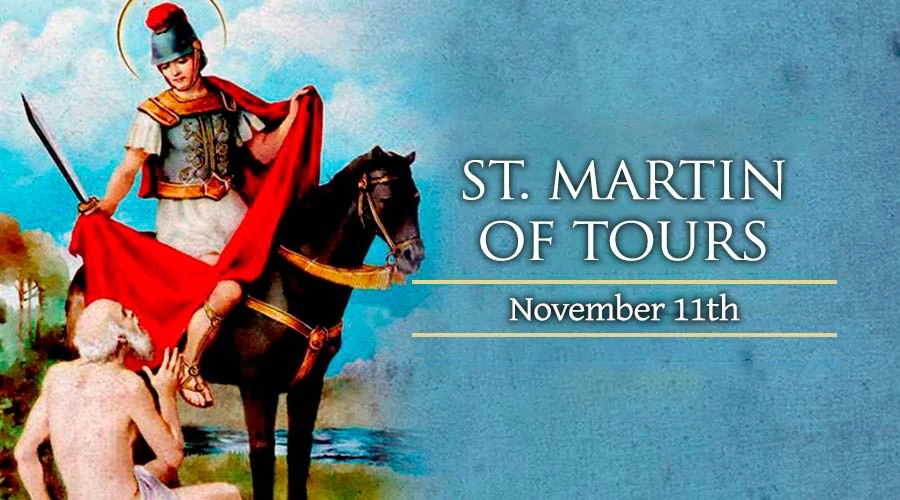
On Nov. 11, the Catholic Church honors St. Martin of Tours, who left his post in the Roman army to become a “soldier of Christ” as a monk and later bishop.
Martin was born around the year 316 in modern-day Hungary. His family left that region for Italy when his father, a military official of the Roman Empire, had to transfer there. Martin's parents were pagans, but he felt an attraction to the Catholic faith which had become legal throughout the empire in 313. He received religious instruction at age 10, and even considered becoming a hermit in the desert.
Circumstances, however, forced him to join the Roman army at age 15, when he had not even received baptism. Martin strove to live a humble and upright life in the military, giving away much of his pay to the poor. His generosity led to a life-changing incident, when he encountered a man freezing without warm clothing near a gate at the city of Amiens in Gaul.
As his fellow soldiers passed by the man, Martin stopped and cut his own cloak into two halves with his sword, giving one half to the freezing beggar. That night, the unbaptized soldier saw Christ in a dream, wearing the half-cloak he had given to the poor man. Jesus declared: “Martin, a catechumen, has clothed me with this garment.”
Martin knew that the time for him to join the Church had arrived. He remained in the army for two years after his baptism, but desired to give his life to God more fully that the profession would allow. But when he finally asked for permission to leave the Roman army, during an invasion by the Germans, Martin was accused of cowardice.
He responded by offering to stand before the enemy forces unarmed. “In the name of the Lord Jesus, and protected not by a helmet and buckler, but by the sign of the cross, I will thrust myself into the thickest squadrons of the enemy without fear.” But this display of faith became unnecessary when the Germans sought peace instead, and Martin received his discharge.
After living as a Catholic for some time, Martin traveled to meet Bishop Hilary of Poitiers, a skilled theologian and later canonized saint. Martin's dedication to the faith impressed the bishop, who asked the former soldier to return to his diocese after he had undertaken a journey back to Hungary to visit his parents. While there, Martin persuaded his mother, though not his father, to join the Church.
In the meantime, however, Hilary had provoked the anger of the Arians, a group that denied Jesus was God. This resulted in the bishop's banishment, so that Martin could not return to his diocese as intended. Instead Martin spent some time living a life of severe asceticism, which almost resulted in his death. The two met up again in 360, when Hilary's banishment from Poitiers ended.
After their reunion Hilary granted Martin a piece of land to build what may have been the first monastery in the region of Gaul. During the resulting decade as a monk, Martin became renowned for raising two people from the dead through his prayers. This evidence of his holiness led to his appointment as the third Bishop of Tours in the middle of present-day France.
Martin had not wanted to become a bishop, and had actually been tricked into leaving his monastery in the first place by those who wanted him the lead the local church. Once appointed, he continued to live as a monk, dressing plainly and owning no personal possessions. In this same spirit of sacrifice, he traveled throughout his diocese, from which he is said to have driven out pagan practices.
Both the Church and the Roman Empire passed through a time of upheaval during Martin's time as bishop. Priscillianism, a heresy involving salvation through a system of secret knowledge, caused such serious problems in Spain and Gaul that civil authorities sentenced the heretics to death. But Martin, along with the Pope and St. Ambrose of Milan, opposed this death sentence for the Priscillianists.
Even in old age, Martin continued to live an austere life focused on the care of souls. His disciple and biographer, St. Sulpicius Severus, noted that the bishop helped all people with their moral, intellectual and spiritual problems. He also helped many laypersons discover their calling to the consecrated life of poverty, chastity and obedience.
Martin foresaw his own death and told his disciples of it. But when his last illness came upon him during a pastoral journey, the bishop felt uncertain about leaving his people.
“Lord, if I am still necessary to thy people, I refuse no labour. Thy holy will be done,” he prayed. He developed a fever, but did not sleep, passing his last several nights in the presence of God in prayer.
“Allow me, my brethren, to look rather towards heaven than upon the earth, that my soul may be directed to take its flight to the Lord to whom it is going,” he told his followers, shortly before he died in November of 397.
St. Martin of Tours has historically been among the most beloved saints in the history of Europe. In a 2007 Angelus address, Pope Benedict XVI expressed his hope “that all Christians may be like St Martin, generous witnesses of the Gospel of love and tireless builders of jointly responsible sharing.”
Latest news

No reason to be cynical about celebrity conversions, Bishop Barron and others say

6 easy activities to help children understand Memorial Day

World Children's Day: Pope Francis instills key lesson on Holy Spirit at Mass with children

Meet the modern-day ‘devil’s advocate’ in the process of canonization

New priest finds calling to young adult ministry through Ultimate Frisbee

12 things to know and share about the Holy Trinity

Pope Francis meets with 50,000 for World Children’s Day in Rome’s Olympic Stadium

Carbon dating reveals true age of purported tunics of St. Peter and St. John

Kenyan pilgrims begin more than 200-mile walk to mark Ugandan Martyrs Day

Cardinal Hollerich: ‘Today we have politicians. Politicians have no convictions’
Catholic Saints
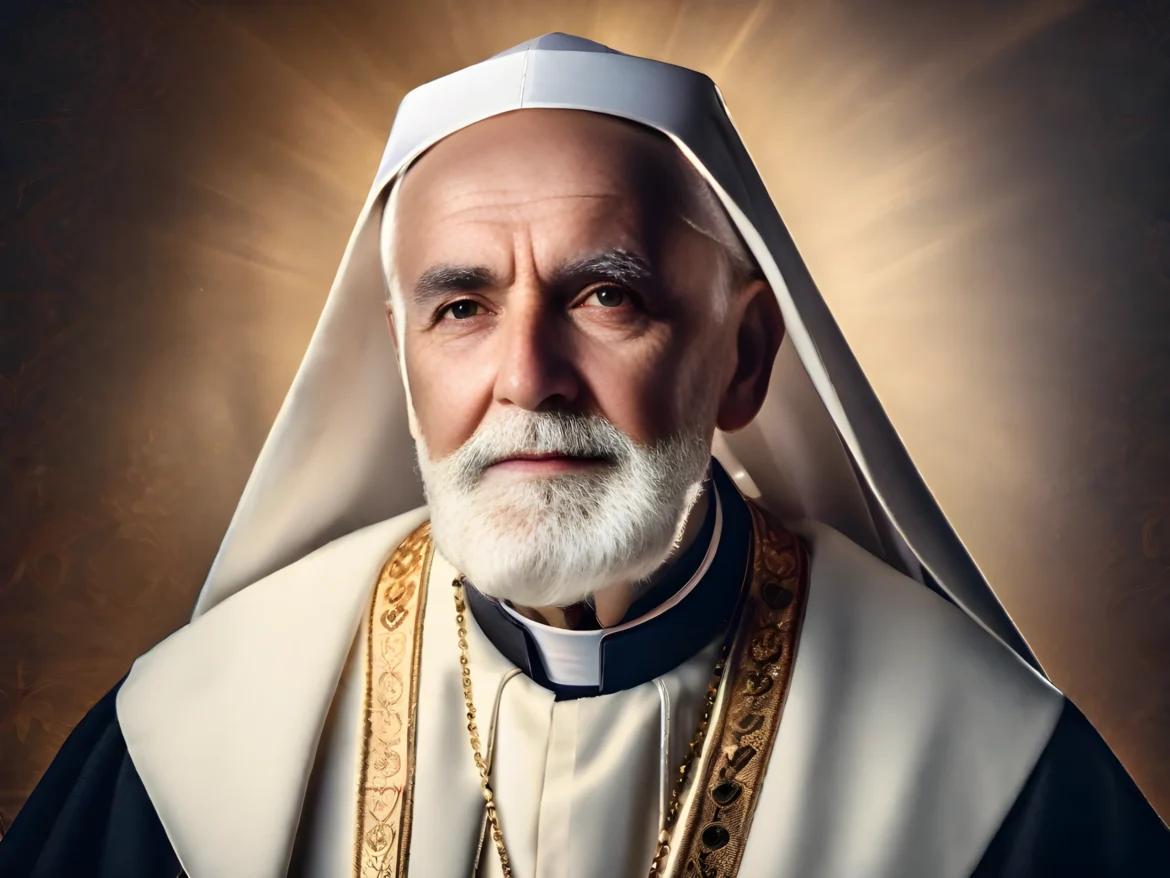
- Martin of Tours: A Beacon of Faith and Humility
There is something profoundly captivating about the life of St. Martin of Tours. His story, a testimony of sacrificing one's own comfort for the sake of others, instills a sense of awe even today. Nestled within the folds of time, there awaits an anecdote from his life that I often reflect upon. On a bitterly cold winter day , a near-naked beggar was shivering in the freezing cold. Martin, moved by the man's plight, took his own cloak, tore it in two, and covered the beggar to protect him from the cold. That night, he dreamt of Jesus wearing the same piece of his cloak, thanking him for his compassion and charity. This act of kindness, the selfless sharing of his cloak, marks one of the significant events of Martin's life.
Table of Contents
The Early Life of St. Martin of Tours
Born in the year 316 AD, in what is now Hungary, Martin has been a symbol of faith, humility, and dedication. Despite his father's wishes to join the Roman army, Martin found himself more inclined towards Christianity and the Church. His entry into the Christian religion was not immediate, but once he devoted himself, he did so wholeheartedly.
Martin’s Journey Towards Spirituality
Martin of Tours had a spiritual awakening in Amiens, where he served in the Roman army. The incident with the beggar sparked the flame of spirituality within him. After this transformational experience, Martin left the military to serve God and spread the message of love and charity. He embraced monastic life and became a disciple of St. Hilarius in Poitiers.
Martin as a Monk and Hermit
Leading a life of austerity and spiritual rigor, St. Martin developed a deep understanding of the Holy Scriptures. He lived as a hermit for a while, inspiring many others by his example. His reputation as a holy man led to his appointment as the Bishop of Tours.
Martin as the Bishop of Tours
Despite his reluctance to assume the role, Martin's appointment as the Bishop did not change his monastic lifestyle. He continued to live simply and humbly, setting an example for both clergy and laypeople. As a bishop, his life was marked by miracles and acts of charity.
Miracles Associated with Martin of Tours
Several miracles are attributed to St. Martin, including resurrections and healings, which consolidated his reputation as a saint during his lifetime. His fame transcended boundaries, attracting people from afar seeking spiritual guidance and healings.
Martin’s Legacy
More than 1700 years after his death, St. Martin's spirit lives on. His legacy continues to inspire countless individuals around the world, reminding them of the transformative power of faith, humility, and charity. It serves as a reminder that our actions, founded in love, can touch the heart of God.
"Heavenly Father, as we recall the selfless love and humility of your faithful servant, St. Martin of Tours, may we be inspired to live according to your will. May we become true ambassadors of your love and mercy. We ask this through Christ, our Lord. Amen."
May the life of St. Martin of Tours embolden us all to imitate his virtues. As we remember him, let's pray that his teachings would resonate in our hearts, illuminating our path, and leading us ever closer to our Heavenly Father.
In the vast ocean of saints, Martin of Tours emerges as a guiding star, showing us the way to navigate the tumultuous waters of life with courage, conviction, and love. The echo of his acts of charity and humility reverberates across centuries, enveloping believers with warmth and hope.
Remembering St. Martin, we are reminded that greatness lies not in worldly achievements but in humble acts of kindness. As members of the Catholic faith, may we strive to live by his example, loving and serving those around us, no matter how insignificant our actions may seem.
Who knew that the simple act of sharing a cloak could write an unforgettable chapter in the annals of Christianity? Perhaps, it's the smallest acts of love that leave the most significant imprints on the sands of time.
Remember, Martin of Tours demonstrates that the path to sanctity is paved with small acts of love and sacrifice. Let's take this message to heart and strive to live a life worthy of our calling.
St. Frances Xavier Cabrini HD

LIVE | Race - PART 2 | CrowdStrike 24 hours of Spa - Fanatec GT World Challenge powered by AWS

St. Margaret of Scotland HD

What was Saint Martin of Tours known for?
Saint Martin of Tours is a renowned figure in the Catholic Church known for more than one reason. Born around 316 AD in Hungary, he is often associated with the military as he was conscripted into the Roman army. However, he is most recognized for an incident where he cut his cloak in half to share with a beggar during a snowstorm . His act of charity is widely commemorated, symbolizing his profound compassion for the poor and the destitute.
Later, he had a dream where Jesus revealed Himself wearing the half-cloak Martin had shared. This vision prompted him to be baptized and abandon his military career. Martin sought a monastic life and became a disciple of St. Hilary of Poitiers, leading to the founding of the first monastery in Gaul (now France) .
Eventually, Martin became the Bishop of Tours. Notably, he was one of the first bishops to be elected by the people, rather than by church officials or imperial authority. As a bishop, he continued to live monastically, focusing on evangelism, raising other monasteries, and confronting Arianism, a heretical doctrine that denied Christ's divinity.
St. Martin of Tours died on November 8, 397. His legacy lives on in his feast day, November 11, celebrated in many parts of the Christian world. He is the patron saint of soldiers, horses, riders, geese, and vintners, among other things, due to various legends and tales associated with him.
What were the miracles of Martin of Tours?
Saint Martin of Tours was one of the most recognized saints in the Western Christianity who lived in the 4th century. The miracles attributed to him were recorded in the "Vita S. Martini" ('Life of Saint Martin') by Sulpicius Severus.
The Miracle of the Pine Tree: St. Martin is said to have brought down a Pine tree that was used for pagan worship, despite the protests of the local people. He declared his faith in God and offered to stand in the path of the falling tree. As the tree was cut down, it miraculously fell in the opposite direction, thus sparing him.
The Raising of the Catechumen: In the second miracle, a young catechumen (a Christian being instructed in the faith but not yet baptized) fell ill and died. Upon hearing the news, St. Martin visited the deceased body, lay upon it, and prayed fervently. Suddenly, the young man's body began to show signs of life, and he was revived, thus showcasing a resurrection miracle.
The Miracle of the Fire: When a massive fire broke out at a place where St. Martin was staying, he confronted the raging inferno without any fear, praying fiercely and marking the sign of the cross. Astonishingly, the fire subsided, and no harm came to anyone present or the surrounding buildings.
These accounts of miracles attributed to Saint Martin of Tours have served to represent his virtue, faith, and power as a miracle worker in the eyes of the Catholic Church.
What is a famous quote from St Martin of Tours?
St. Martin of Tours is a beloved Catholic saint with numerous quotes attributed to him. One of his most notable quotes is:
" Hitherto, I have served you as a soldier; let me now serve Christ. Give the bounty to these others who are going forth to fight, but I am a soldier of Christ and it is not lawful for me to fight. "
This quote reflects St. Martin's decision to leave his military service and devote his life to Christ. This pivotal moment clearly demonstrates St. Martin’s commitment to his faith and his readiness to serve in the name of peace, even at the cost of his own personal safety and status.
Why is St Martin of Tours a saint?
St. Martin of Tours is regarded as a saint for various significant reasons.
Firstly, he was one of the first known conscientious objectors , opting to serve in a non-combat role during his time in the Roman army. His decision was based not on fear of battle, but by his faith and belief that his Christian beliefs were incompatible with military service.
Secondly, St. Martin is celebrated for his spirit of charity and kindness . The most famous legend attached to him is the account of him using his military sword to cut his cloak in half, to give part to a beggar clad only in rags in the depth of winter. This act of charity illustrates his selfless desire to help others.
Lastly, St. Martin was instrumental in spreading Christianity in rural Gaul (modern-day France) , which was largely pagan at the time. He established monasteries and promoted education, playing a crucial role in the advancement and spread of the Christian faith.
St. Martin's piety, goodwill, and efforts to propagate Christianity are the main reasons why he is adored as a saint in the Catholic Church. His feast day is observed on November 11.
Who was Martin of Tours and what is his significance in the Catholic church?
Martin of Tours was a bishop in the fourth century who is regarded as one of the most significant figures in the development of Western Christianity. He was born around 316 AD in Szombathely, Hungary to pagan parents. At a young age, Martin felt a call to Christianity and eventually became a catechumen (someone receiving instruction in the Christian faith).
His life took a significant turn when he had a vision of Christ appearing to him as a beggar. This triggered his full conversion to Christianity and led to one of the most famous anecdotes about his life. When approached by a half-naked beggar asking for alms in the middle of winter, Martin famously cut his military cloak in half to share with the man. That night, he dreamt of Jesus wearing the half-cloak, confirming his decision to follow Christ wholeheartedly.
Martin eventually left the military to become a disciple of Saint Hilary of Poitiers, and later founded a monastic community at Ligugé, France - the first monastery in Gaul. He was reluctantly ordained as Bishop of Tours in 372 AD, where he vigorously propagated Christianity across Western Europe.
Martin’s significance in the Catholic Church is manifold. He stands as a model of Christian charity, represented by the act of sharing his cloak with the beggar. His establishment of the monastery paved the way for the spread of monasticism in the West. Moreover, Martin strongly opposed Arianism, a controversial theological topic in the early church, resulting in his role as a defender of orthodoxy.
Most importantly, Martin of Tours is recognized for extending the concept of sanctity beyond the martyrdom. As a confessor saint who had not died as a martyr, he began a new trend in the veneration of saints.
The Feast of Saint Martin of Tours is celebrated annually on November 11, often marking the beginning of winter and the advent season. This reflects his enduring legacy within the Catholic tradition.
What miracles are attributed to Saint Martin of Tours?
Saint Martin of Tours, one of the most familiar and recognizable Christian saints in the Western tradition, is credited with numerous miracles. The miracles attributed to him are often tied to his profound humility, kindness, and faith.
1. The Miracle of the Cloak: This is probably the most famous miracle associated with Saint Martin of Tours. According to legend, while Martin was still a soldier in the Roman army, he encountered a poorly dressed beggar during a cold winter. Despite not having much himself, Martin cut his soldier's cloak in half with his sword, giving one half to the beggar. That night, Martin dreamt of Jesus Christ wearing the half-cloak he had given away, signifying his service to Christ in the poor.
2. Resurrection Miracles: There are many accounts where Martin brought people back from the dead. One account involves a catechumen (a Christian convert under instruction before baptism) who died without being baptized. Martin laid on top of the deceased and prayed. After two hours, the man came back to life.
3. Healing the Sick: Many miracles of healing are also ascribed to Saint Martin. In one case, he is said to have healed the diseased eye of Saint Paulinus of Nola. In another account, he cured an entire island of people from diseased conditions after they converted to Christianity.
4. Exorcism: Martin was also known for performing exorcisms. There's a tale that says he once confronted a pagan temple, where he was challenged by a tree - a symbol of a pagan god. A demonically possessed man was brought forward, and Martin commanded the demon to vacate the man's body.
5. Control over Nature: Several miracles reflect Martin's supposed control over the elements. It's believed he once redirected a boulder threatening to crush a church. On another occasion, it was reported that he caused a drought-ending rainstorm on a parched region.
Remember, these miracles, passed down through oral tradition and later written records, serve to highlight Saint Martin's saintly virtues and God's power working through him. For some, these miracles are accepted as faith's mysteries, while skeptics may view them as allegorical or symbolic narratives.
How did Martin of Tours become a saint in the Catholic Church?
Martin of Tours became a saint in the Catholic Church through a series of notable events and decisions in his life that exemplified Christian virtues, leading to his canonization after his death.
Born in modern-day Hungary in 316 AD, Martin was conscripted into the Roman army at a young age. One winter day, Martin famously encountered a shivering beggar whom he clothed using part of his own military cape. That night, he dreamt of Jesus wearing the piece of the cloak he had given away, which prompted his baptism into Christianity.
Eventually, he left the military to live a monastic life. He is known as the founder of monasticism in France . He was later coerced by the people of Tours to become their bishop. As a bishop, he continued his simple and austere lifestyle by living in a cell attached to his church. He was known for his commitment to the poor, his miracles, and his gift for evangelizing.
Upon his death on November 8, 397, Martin's acclaim was almost immediate--despite canonization processes not being formalized until the 12th century. His successor in the bishopric of Tours, Gregory, wrote extensively about Martin. Gregory’s writings about Martin's miracles and holiness played a significant role in spreading Martin's reputation. The veneration of Martin spread throughout the whole Church very swiftly.
By the Middle Ages, Martin of Tours was one of the most popular saints in the Church, especially among the Frankish (French) peoples. His feast day, Martinmas, became associated with many customs across Europe. Martin was eventually canonized as a saint in the Catholic Church for his charity, his dedication to God, and his commitment to monastic and evangelical life.
What lessons can we learn from the life and works of Saint Martin of Tours?
Saint Martin of Tours lived a life of dedication to the service of God and humanity, providing us with many valuable lessons.
Firstly, he teaches us about the power of selfless generosity . Perhaps the most famous story about Saint Martin is when he encountered a naked beggar during winter and cut his cloak in half to share it. His act of kindness didn't just alleviate the man's immediate suffering but also exemplifies Christ's teaching to love our neighbor as ourselves.
Secondly, Martin illustrates the virtue of humility . Despite his status as a Bishop, he chose to live a simple, austere life, resembling the hermits of Egypt. From this, we learn the importance of humility and simplicity in achieving spiritual closeness to God.
Thirdly, Saint Martin shows us the importance of courageous faith . He was known to be fearless in spreading Christianity, confronting even the pagan practices within his diocese. His perseverance despite the challenges he faced displayed a profound commitment to his faith.
Lastly, he embodies the spirit of Christian service . Martin didn't limit his mission to preaching; he founded monasteries, educated the clergy, and even intervened on behalf of the accused—actions that notably improved societal conditions in his time.
In summary, Saint Martin of Tours' life teaches us to extend compassion to the less fortunate, practice humility, stand firm in our faith, and provide active service in our communities. His story remains a powerful testament to the transformative impact of Christian virtues when applied earnestly.
On which date is the feast day of Saint Martin of Tours celebrated, and how is it usually commemorated?
The feast day of Saint Martin of Tours is celebrated on November 11th . This day is usually commemorated through solemnly observed liturgies in his honor. In countries like France, celebrations may also include processions and other communal events. Saint Martin is remembered for his act of charity when he cut his cloak in half to share with a beggar during a snowstorm. His love for the poor and his humility remain significant aspects of his sainthood.
Saint Martin of Tours
Where new beginnings are possible.

- Finance and Pastoral Council
- Charity and Solidarity Center


13 Inspiring Facts of the Legacy of St. Martin of Tours: How His Virtues Can Transform Your Life
Table of Contents
St. Martin of Tours is a beloved saint who is known for his remarkable life and contributions to the Christian faith. He was a man of great humility, generosity, and devotion to God, whose example still inspires people around the world today. In this blog post, we will explore the life and legacy of St. Martin, from his humble beginnings to his remarkable achievements as a bishop and spiritual leader. So sit back, relax, and let’s delve into the captivating story of St. Martin of Tours.
Who was Martin of Tours and what did he do?
St. Martin of Tours is one of the most beloved saints in Christian history. He is known for his humility, his compassion, and his commitment to serving others. After leaving the army, Martin became a monk and eventually a bishop. He traveled throughout France, spreading the gospel and ministering to those in need.
One of the most famous stories about St. Martin of Tours is his encounter with a pagan temple. The locals in a particular village were still worshiping pagan gods, and they had a temple dedicated to one of these deities. Martin was so troubled by this that he decided to take action. He went to the temple and began to pray. As he prayed, the temple began to shake, and the pagan idols inside it were destroyed. The people of the village were so amazed by this that many of them converted to Christianity.
St. Martin of Tours is also known for his miracles. He healed the sick, raised the dead, and even tamed wild animals. But despite these amazing feats, Martin remained humble and devoted to his faith. He lived a simple life, and he never sought fame or fortune.
Today, St. Martin of Tours is remembered as a model of Christian virtue. He reminds us that we should always be kind and compassionate to others, and that we should never let our differences divide us. St. Martin of Tours is truly an inspiration to us all.
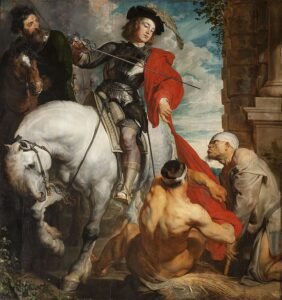
Why is St Martin special?
St. Martin of Tours was a bishop who lived in the fourth century. He was born in what is now Hungary and grew up in Italy, where he was drafted into the Roman army. One day, while on horseback, he came across a beggar shivering in the cold. Moved by compassion, he took off his cloak and cut it in half with his sword, giving one half to the beggar. That night, St. Martin had a vision of Jesus wearing the half-cloak he had given away. From that moment on, he dedicated his life to serving God and helping the less fortunate.
St. Martin is known for many other acts of kindness and generosity, including healing the sick, converting pagans to Christianity, and founding several monasteries. He was also a skilled preacher, and his sermons attracted large crowds of people who were inspired by his words.
Perhaps what makes St. Martin most special, however, is his unwavering commitment to living a life of humility and service. Despite his many accomplishments and the adoration of his followers, he remained humble and devoted to God until his death.

What are 3 interesting facts about St Martin?
- St. Martin’s feast day is celebrated on November 11th each year. This date marks the anniversary of his death, which occurred in the year 397. In many countries, including France, Spain, and Italy, St. Martin’s Day is celebrated with parades, feasts, and other festivities.
- St. Martin is often depicted riding a horse and sharing his cloak with a beggar. This image has become a symbol of his compassion and generosity, and it is a common sight in churches and other places of worship.
- St. Martin is also known as the patron saint of soldiers, horses, and the poor. This is because of his military background, his love of horses, and his dedication to helping those in need. Many people pray to St. Martin for protection, guidance, and assistance in times of trouble.
St. Martin of Tours is a truly special and inspiring figure from history. His selflessness, humility, and devotion to God continue to inspire people around the world today. Whether you are a believer or not, there is no denying the impact that St. Martin’s life and legacy have had on the world. So let us all strive to live with the same compassion, kindness, and generosity that he exemplified in his own life.
Were Saint Martin of Tours Parents Pagans?
To understand the story of St. Martin of Tours, we need to go back to the beginning. Martin was born in the 4th century in what is now Hungary. His parents were not Christian; in fact, they were pagans. Despite this, Martin felt drawn to the Christian faith from a young age.
As a young man, Martin served in the Roman army. It was during this time that he had a life-changing encounter with a beggar. Martin saw the man shivering in the cold, and he was moved with compassion. He cut his own cloak in half and gave one part to the beggar. That night, Martin had a vision of Jesus, who appeared to him wearing half of the cloak he had given away. This experience led Martin to convert to Christianity and dedicate his life to serving God.
What is St Martin of Tours known for?
St. Martin of Tours is known for many things, but perhaps most of all for his humility and kindness towards others. He dedicated his life to serving God and those in need, and his selflessness has earned him a place in the hearts of many.
St. Martin of Tours was a Roman soldier before he was converted to Christianity, and it was his compassion towards a beggar that led him to take up the mantle of a monk. He is also known for his work as a bishop, traveling throughout France and spreading the gospel to those who would listen.
But perhaps his most well-known act of kindness was when he shared his cloak with a beggar. This act of charity has become a symbol of his generosity and compassion, and it has inspired countless people throughout the centuries.
What miracles did St Martin of Tours perform?
St. Martin of Tours is also known for the many miracles he performed during his lifetime. He healed the sick, raised the dead, and even tamed wild animals. These miracles were seen as a sign of God’s grace and favor, and they helped to spread the Christian faith throughout the land.
One of the most famous stories about St. Martin of Tours involves a fire that broke out in a church. The people inside were trapped, and it seemed as though all hope was lost. But St. Martin of Tours prayed for their safety, and the flames miraculously went out. The people were saved, and they saw this as a sign of Martin’s special connection to God.
Another miracle that St. Martin of Tours is known for is the time he banished a demon from a possessed man. The man had been suffering for a long time, and many people had tried to help him, but to no avail. But St. Martin of Tours, through the power of his faith, was able to drive the demon out and restore the man to health.
St. Martin of Tours was an incredible figure who dedicated his life to serving others and spreading the Christian faith. His acts of kindness and generosity have inspired countless people throughout the centuries, and his miracles have been seen as a sign of God’s grace and favor. I hope this brief overview of his life and achievements has given you a glimpse into the beauty and wonder of this remarkable saint. Thank you for joining me on this journey!
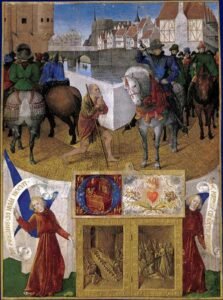
What was one of the achievements of Martin of Tours?
One of the most significant achievements of St. Martin of Tours was his role in the spread of Christianity throughout Europe. He traveled far and wide, preaching the gospel to those who had not yet heard it, and his message of love and compassion resonated with many people.
In addition to his preaching, St. Martin of Tours was also a skilled organizer and administrator. He founded many monasteries throughout France, which served as centers of learning and spiritual growth. These monasteries were instrumental in spreading the Christian faith, and they helped to establish a strong foundation for the church in Europe.
Another achievement of St. Martin of Tours was his role as a peacemaker. In a time of great turmoil and violence, he worked tirelessly to bring people together and promote understanding. He believed in the power of love and forgiveness, and he often put his own safety at risk to intervene in conflicts and prevent bloodshed.
Where is St. Martin of Tours buried?
St. Martin of Tours passed away on November 8, 397 AD, and he was buried in the city of Tours, France. His tomb quickly became a place of pilgrimage, and many people came to pray and seek his intercession. Over the years, the tomb was expanded and embellished, and it became one of the most important sites of Christian devotion in Europe.
Today, the Basilica of St. Martin in Tours is a magnificent structure that honors the memory of this great saint. The basilica contains many relics and artifacts associated with St. Martin, including his tomb, his cloak, and a collection of ancient manuscripts. Visitors from all over the world come to this holy site to pay their respects and seek inspiration from the life of this remarkable man.
St. Martin of Tours was a true giant of the Christian faith, and his life and legacy continue to inspire people today. His achievements in spreading the gospel, promoting peace, and serving others are a testament to the power of love and compassion, and his burial place in Tours serves as a reminder of his enduring influence on the world. Thank you for joining me on this journey!

How do I make a pilgrimage to see St. Martin of Tours?
If you are interested in making a pilgrimage to see St. Martin of Tours, the first step is to plan your trip to Tours, France. There are several ways to get to Tours, including by plane, train, or car. Once you arrive in the city, you can visit the Basilica of St. Martin, which is located in the heart of the city and is easily accessible by public transportation.
When you arrive at the basilica, you will be able to see the tomb of St. Martin, as well as many other relics and artifacts associated with his life. You can also attend Mass, participate in prayer services, and light candles in honor of this great saint. If you have any specific prayers or intentions, you can ask for St. Martin’s intercession, as he is known for his powerful ability to intercede on behalf of those in need.
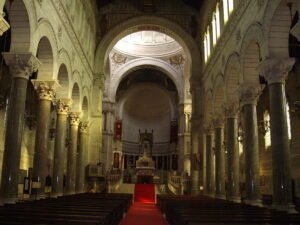
What other saints are in Tours, France?
Tours, France is a city that is rich in Christian history and tradition, and there are several other saints who are honored there in addition to St. Martin. One of the most famous is St. Gatian, who is considered to be the first bishop of Tours. He is said to have been sent to the city by St. Peter himself, and he played a crucial role in establishing the Christian church in the region.
Another notable saint associated with Tours is St. Gregory of Tours, who was a bishop and historian in the sixth century. He is known for his many writings, which include a history of the Franks and a collection of miracle stories. St. Gregory was also a champion of the poor and the oppressed, and he worked tirelessly to promote social justice and equality.
A pilgrimage to see St. Martin of Tours can be a deeply meaningful and spiritual experience, and it is just one of the many ways in which you can connect with the rich Christian history of Tours, France. Whether you are seeking solace, inspiration, or simply a deeper connection with your faith, a visit to this holy city is sure to leave a lasting impression on your heart and soul.
What else is there to do in Tours, France?
Tours is a beautiful city located in the Loire Valley of France. It is known for its stunning architecture, rich history, and delicious food and wine. In addition to visiting the Basilica of St. Martin, there are many other things to see and do in Tours.
One popular attraction is the Château de Tours, which is a medieval castle that now houses a museum of fine arts. The Musée des Beaux-Arts de Tours contains a stunning collection of artwork from the 14th to 20th centuries, including works by famous artists such as Rubens, Rembrandt, and Monet.
Another must-see in Tours is the Cathedral of St. Gatian, which is a beautiful example of Gothic architecture. It is dedicated to St. Gatian, the first bishop of Tours, and contains many interesting artifacts and relics.
Tours is also known for its delicious food and wine. The city is located in the heart of the Loire Valley, which is famous for its wine production. You can take a wine tour, visit a vineyard, or simply enjoy a glass of local wine at one of the many restaurants and cafes in the city.
Making travel arrangements to see St. Martin of Tours
I like to travel, and I think that visiting the saints on a pilgrimage will forever enlighten your mind and heart.
I’ve traveled to a ton of different nations. Among the nations I’ve visited are America, Scotland, Korea, Hong Kong, Macau, The Vatican, Switzerland, France, Milan, and all of Israel. I’m going to Turkey soon too.
I am aware of any potential travel needs you could have. In preparing for your pilgrimage, check out these links:
- Find cheap flights for your journey HERE
- A Car Rental
- Taxi Drivers
- Bus or Train Tickets
- Choose the Perfect Hotel for Your Trip HERE
- Fun Events for Your Journey
- Travel Insurance
- Phone for Traveling
Time to pack your bags! 🙂
What did Saint Martin of Tours do to become a saint?
St. Martin of Tours was born in the fourth century in Hungary, but he spent much of his life in France. He was initially a soldier in the Roman army, but he eventually became disillusioned with the military life and decided to become a monk.
St. Martin is known for many things, including his kindness, generosity, and love for the poor. One of the most famous stories about him tells of how he cut his own cloak in half to give to a beggar who was cold and in need of clothing. Later, he had a vision of Jesus wearing the half of the cloak that he had given away, which convinced him that his actions had been pleasing to God.
St. Martin’s reputation for holiness and compassion grew over time, and he eventually became a bishop. He continued to devote himself to the poor and the needy, and he performed many miracles throughout his life.
After his death in 397, St. Martin of Tours was venerated as a saint by the Catholic Church. He is now known as the patron saint of beggars, soldiers, and winemakers, among others.
St. Martin of Tours is a beloved saint who is revered for his kindness, compassion, and devotion to the poor. His life and legacy continue to inspire people all over the world, and his memory is kept alive through the many churches and monuments dedicated to him in Tours and beyond.

How can st. martin of tours help me to become a saint?
St. Martin’s life was marked by acts of selflessness and compassion towards others. He was known for his willingness to give to the poor and needy, even when it meant sacrificing his own comfort and security. This spirit of generosity and selflessness is something that we can all strive to emulate in our own lives.
St. Martin also placed a strong emphasis on prayer and contemplation. He spent many hours in prayer, seeking to deepen his relationship with God and to understand His will for his life. This dedication to prayer and spiritual growth is an important aspect of becoming a saint.
Another key lesson that we can learn from St. Martin is the importance of humility. Despite his many accomplishments and his reputation as a holy man, St. Martin remained humble and saw himself as a servant of God and others. By following his example, we can learn to put aside our own ego and focus on serving others and fulfilling God’s plan for our lives.
St. Martin’s life and teachings remind us that the path to sainthood is not an easy one, but it is possible for anyone who is willing to commit themselves fully to a life of virtue and holiness. By following his example and seeking to emulate his virtues, we can grow closer to God and work towards becoming saints ourselves.
In conclusion, St. Martin of Tours is a powerful ally and inspiration for anyone who wishes to become a saint. His life and teachings remind us of the importance of selflessness, prayer, and humility, and serve as a guide on our own journey towards holiness. Let us seek to follow his example and draw closer to God through our words and actions.
Are You Inspired?
Did today’s lessons provide you with any inspiration? I genuinely appreciate studying and discussing the lives of the saints. Want an easy conversation starter?
If you’re wearing the gorgeous shirt I designed especially for you, you can recount the story of St. Martin of Tours.
Wearing these t-shirts makes it simpler to discuss saints with close friends, family, and random strangers. You can now share St. Martin of Tours’ lovely story with the world.
They might even decide to go to church with you so you can preach the gospel there. You may stress the fact that everyone requires a Savior, that Jesus is the only sacrifice to atone for our sins, and that everyone is dependent upon Him.
Enrolling them in your parish’s RCIA programs would be so beneficial for them to learn everything that they need to know about our beautiful Christian faith.
To view the shirt design, simply click the image or go HERE . Select your preferred size and color, then click the BUY NOW button to proceed to the payment page.

For more great saints, visit our blog HERE .
Have a few more minutes to dive into another saint?
Why not learn about:
- The Annunciation to Mary: 9 Cataclysmic Facts how Faith and Surrender Changed the World
- 10 Facts Unveiling the Beauty of “The Annunciation Triptych”: A Masterpiece of Renaissance Art
- St. Patrick: 14 Awe-inspiring Aspects about his Life and Legacy
- St. Louise de Marillac: 15 In spiring & Unknown Facts on her Life
Have you considered joining us daily to discover more about the Saint of the Day? Please take a moment to sign up if you would want to receive my daily saint emails in your inbox. As I know you have a lot on your plate, I’ll keep it brief, but I genuinely want to tell you more so you can benefit from my experience and grow daily with the saints like me.
I’ll also give you a free screensaver for your phone as a special treat. I’ll send you the link to download the screensaver as soon as you submit the form. Enjoy!
*Name *Email
Well, that’s all for today.
I’ll see you back tomorrow with another Saint of the Day to inspire you!
God bless you,

Leave a Comment Cancel Reply
Your email address will not be published. Required fields are marked *
Save my name, email, and website in this browser for the next time I comment.
Check Out *NEW* Items in Our *Saintly Shop*! Dismiss

PLUS, Get Your FREE Mother Mary Printable as a Welcome Gift to our Family!
Privacy Policy
My Catholic Life!
A journey of personal conversion!

Saint Martin of Tours

November 11: Saint Martin of Tours, Bishop—Memorial
316 or 336–397 Patron Saint of beggars, cavalry, equestrians, geese, horses, innkeepers, Pontifical Swiss Guards, quartermasters, reformed alcoholics, soldiers, tailors, and winemakers Invoked against alcoholism and poverty Pre-Congregation canonization Liturgical Color: White
Quote: Accordingly, at a certain period, when he had nothing except his arms and his simple military dress, in the middle of winter, a winter which had shown itself more severe than ordinary, so that the extreme cold was proving fatal to many, he happened to meet at the gate of the city of Amiens a poor man destitute of clothing. He was entreating those that passed by to have compassion upon him, but all passed the wretched man without notice, when Martin, that man full of God, recognized that a being to whom others showed no pity, was, in that respect, left to him. Yet, what should he do? He had nothing except the cloak in which he was clad, for he had already parted with the rest of his garments for similar purposes. Taking, therefore, his sword with which he was girt, he divided his cloak into two equal parts, and gave one part to the poor man, while he again clothed himself with the remainder. ~From the Life of Saint Martin, by Sulpicius Severus
Reflection: Saint Martin of Tours has been one of the most revered and loved saints in European history for two primary reasons: he lived a life of heroic sanctity, and someone wrote it all down. Sulpicius Severus is believed to have been a wealthy man who converted to Christianity through the ministry of Bishop Martin. He then became a priest, interviewed Bishop Martin before he died, and wrote a book about Martin’s incredible life. The book was copied over and over again and became one of the standard texts for religious and laity alike for many centuries. Numerous churches and monasteries bear Martin’s name as a result of his popularity.
Martin was born in Sabaria in Pannonia, within the Roman Empire, modern-day Szombathely, Hungary. Some early records state he was born in 316, others in 336. When Martin was young, his family moved to Ticinum, modern-day Pavia, northern Italy. He was born in the Roman Empire during an important period of change. In 313, Emperor Constantine issued the Edict of Milan, legalizing Christianity. Constantine then became a Christian himself, and it became known that he favored Christians over those who remained pagans. As a result, many people began converting, some for political and economic reasons.
Martin’s father was a soldier who advanced to the rank of military tribune. As a child, Martin became interested in Christianity, but his parents clung to Roman paganism, dismissing the newly legalized Christianity. Martin, however, was not satisfied with his parents’ choice. So, at the age of ten, he went to the local Catholic Church and asked to become a Christian. He was enrolled as a catechumen and began the lengthy process of preparing for Baptism, which would not take place until ten years later. When he was twelve years old, he asked his parents to permit him to become a hermit, but they refused. At the age of fifteen, in compliance with a state law requiring sons of military officers to enlist in the Roman military, Martin became a soldier. Despite being surrounded by many who lived immoral lives, Martin remained true to his faith and lived quite virtuously. His language was always respectful, he treated others with exceptional kindness, he often gave most of his money and belongings to the poor, he humbled himself by serving those who were supposed to serve him, and he continued his preparation for Baptism.
One day, while riding his horse through a town in the middle of winter, Martin came upon a poor man who was poorly dressed and shivering. The man begged people for help, but they ignored him. Martin knew he had to assist, but he had already given his money and other clothing away to the needy. All he had left was the military cloak he wore on his own back, so he dismounted his horse, took out his sword, cut the cloak in two, and gave half to the poor man. His fellow soldiers later laughed at his small funny-looking cloak. That night, Martin had a dream in which Jesus appeared to him wearing the half-cloak and said to a multitude of angels who surrounded them, “Martin, still only a catechumen, has clothed me.” When he awoke, he knew what he needed to do. He sought baptism, which he received at the age of twenty.
Martin remained in the military for two more years at the request of a friend. One day, the commanding officer was passing out bonuses to the soldiers as they prepared for battle the next day. When Martin was called forward, he stated, “I have been your soldier until now. Let me serve God henceforth. Give your bonus to someone who’ll fight for you. I am Christ’s soldier, and it’s not right for me to engage in battle.” Martin was accused of being a coward because they were going into battle the following day. To that accusation he replied, “If you believe I’m acting out of fear, I’ll stand unarmed in front of the enemy lines tomorrow. Shielded only by my faith in Jesus and the sign of the cross, I’ll face them without armor.” Martin was then thrown into prison to wait for the battle, which never happened because the opposing side sought peace. Martin was soon after released from the military.
Having heard of the renowned bishop and future Saint Hilary of Poitiers, Martin traveled to Poitiers in present-day France and stayed with the bishop for some time, learning from him the orthodox faith. He was also ordained a deacon and made an exorcist by Bishop Hilary. After Bishop Hilary was forced into exile for combating Arianism in the imperial court, and after Deacon Martin had a dream about converting his pagan parents, he decided to return to his hometown. On the way, he was attacked by robbers, but upon being asked who he was, he told one of the robbers that he was a Christian. Deacon Martin then shared the Gospel with the man, who repented, let Martin go, and later converted. When Deacon Martin arrived home, he converted his mother to the Christian faith but could not move his father. Others in his hometown also converted.
After encountering the wrath of some Arian priests whom he opposed, and even the Arian Archbishop of Milan, Deacon Martin and a priest spent time living as hermits on the Island of Gallinara. There they lived on herbs and wild roots. One day Martin ate a poisonous root by mistake, but through fervent prayer, God healed him.
Upon hearing that Bishop Hilary’s exile from Poitiers had ended, Deacon Martin moved to a town near the holy bishop and established a monastery. From there, he began preaching throughout the region and performing many miracles. He restored an unbaptized catechumen to life. When the catechumen returned to life, he stated that it was due to Martin’s prayers. On another occasion, Martin brought a slave back to life who had hung himself.
In 371, Martin was chosen by the consent of the people as the Bishop of Tours. Though he initially opposed it and tried to hide, he was tricked and led to the cathedral where his ordination awaited. Once ordained the Bishop of Tours, Bishop Martin moved outside the city and established hermitages with other clerics where he led a life of prayer. For the next twenty-six years, he lived both an eremitical life and also engaged in an active ministry. He traveled throughout Gaul (France), preaching, converting many, performing miracles, and casting out demons. He opposed heresies, worked with other orthodox bishops—such as the future Saint Ambrose of Milan—destroyed pagan temples, and gained the respect of all. His opponents feared him, and his supporters praised God every time they witnessed his ministry in action.
Though Saint Martin of Tours lived a life of heroic virtue and deep prayer, his life and veneration reveal the importance of sharing the stories of the saints with others. After his death, his life has continued to inspire many. As we honor Saint Martin, ponder any ways that God might want to use you as He used Sulpicius Severus, Saint Martin’s biographer. Though you might not be called to write a book about a saint you know, consider ways in which you can share the Gospel by learning more about the saints and sharing their stories with others.

Saints and Feasts of the Liturgical Year Volumes One–Four

Further Reading:
Pope Benedict XVI
Catholic Saints & Feasts
Catholic Encyclopedia
Butler’s Lives of the Saints
Catholic Fire
Catholic News Agency
Franciscan Media
All Saints for Today
All Saints for the Liturgical Year
Saints A–Z>>>
The Life of St. Martin of Tours
Biography of st. martin of tours.
St. Martin was born in the year 316, in the city of Sabaria in what is now Hungary (at that time it was a Roman province). His father, a non-Christian, was a high officer in the Roman army. As a child Martin was left much in the care of the family servants, several of whom were Christians. From them the boy learned a little about their religion and liked to go with them to Mass. But what really impressed him was the difference between the pagan boys and the Christian boys with whom he played: Others were loud and foul-mouthed, quarrelsome, jealous, and dishonest. The Christians, on the other hand, were quiet and clean and friendly; they did not lie, or cheat, or steal. When young Martin asked about this he was told that the Christian religion forbade lying, stealing, quarreling, cheating, unclean speech, and the like. Martin liked this so well that later his fellow soldiers testified that he was never heard to curse or to speak unkindly of anyone.
A Just Roman Soldier
When his father learned that the fifteen-year-old boy was interested in Christianity he was angry. At once he had the young Martin enlisted in a cavalry troop. Now, the Roman army was no school for saints: at this time the Christian religion had been made legal in Rome, but the army was still largely pagan, with a good many half savages from the Roman provinces.
Martin’s father should have been safe, then, in thinking that in the army his son would lose his love for Chris trinity and he would have been safe with anyone but Martin. But the boy had a will of his own, a strong love of virtue, courage, and a mind that he used so well that he was soon promoted. When the troops were ordered to Gaul the seventeen-year-old officer went with them.
Conversion to Catholicism
In Gaul, Martin was free to do as he wished, and at eighteen he was baptized and given minor orders. Resigning from the army, he returned home to try to convert his father. He failed in this, but did have the happiness of seeing his mother baptized before her death.
After a few years, he went back to Gaul, and later was made bishop of Tours. Here, he did great work for God, making many converts and building up the Church. He built the first monastery in France. But his people knew him for his kindness to all and especially to the poor. They honored him, too, for his severe penances and his love of prayer. Thus, when he died at the age of eighty years, he was loved and venerated by all his people. To this day, he is considered one of the greatest Saints of the Church. The church’s feast day for St. Martin is November 11th each year.
Giving the Cloak Off His Back
It was during the intensely cold winter of 335, when many persons perished in Northern France for want of proper clothing and exposure, that one day as a regiment of soldiers were marching through the gate of the city of Amiens, a poor man, clothed in rags and shivering with cold, held out his thin hand for charity. Officers and well-clad soldiers passed him without dropping a coin or inquiring about his needs. At length Martin, now a young officer and scarcely eighteen years of age, rode through the gate. A flush passed over his face as this suffering fellow-creature met his eye.
Without a word, the young officer drew his sword from its scabbard and cut his military cloak in two; and while one-half still hung from his own shoulders, the other had been thrown over those of the shivering beggar. Leaning towards the beggar, he said: “It is all I have to give, for I have no money”; and then spurred on with his regiment.
That night the young officer dreamed that Jesus Christ appeared to him wearing on His shoulders the half of his cloak which had been given to the beggar, and He said to Martin: “Look at this cloak, and see if you recognize it”. Then the shining Visitor turned from the young officer to the troop of Angels who accompanied Him, saying: “Martin, though only a catechumen, has clothed Me with this garment”.
Learn More:
To learn much more about St. Martin of Tours visit https://christianapostles.com/st-martin-of-tours/
Donate to St. Martin of Tours

Parish Events

Right To Life

"Lord, if your people still have need of my services, I will not avoid the toil. Your will be done."
Saint Martin of Tours, patron saint of Saint Martin's University, figures prominently in the development of Christianity in fourth-century Europe. This gentle, humble servant of God, known best for helping those most in need, was chosen by the people of Tours as their spiritual leader, a role he reluctantly accepted. As bishop of Tours, he went on to establish about 3,500 churches.
Born about 316 A.D., in the region that is now Western Hungary, Martin was the son of pagan parents. While he was still a child, his father was transferred to Pavia in Northern Italy, and it was here that he first was drawn to Christianity.
He horrified his father, a tribune in the army, by studying to become a Christian. But as a soldier’s child, he was required to serve in the Army. He was held in chains until he agreed to take his military oath, which he then honored. Although his youth was spent as a cavalryman in the Roman army, he continued to yearn for something more.
Legend has it that Martin, while he was a young soldier stationed in the land of Gaul – now France – chanced upon a shivering, miserable beggar clutching his rags about him in the bitter cold one day. He noticed no one was helping the man, but Martin had nothing with him but the soldier’s clothes he wore. Overcome with concern, Martin removed his heavy wool cavalry cloak and cut it in two, then gave half to the beggar.
Later, Martin had a vision in which Jesus was wearing the half-cloak he’d given the beggar. In his dream, Jesus told the Angels around him that it had been given to him by Martin. Martin immediately became baptized, and not long after, he refused to fight the invading Francs on grounds of conscience, landing in prison. When the invaders suddenly decided to enter peace negotiations, Martin was released and obtained a discharge from the army.
As a free man, he began his commitment to Christianity in earnest, studying under famous scholars and teachers of the era. For many years, he preached and evangelized throughout the countryside, living as a missionary and helping the poor and the sick. His reputation for holiness attracted other monks, and they formed what would become the Benedictine abbey of Liguge, the oldest known abbey in Europe.
Soon, he was considered the holiest man in France.
At a time when bishops were still chosen by the people, he was sought out to serve as bishop after the previous bishop died. Everyone knew Martin was too humble to accept the position, so they resorted to trickery, asking him to come to the church to care for a sick woman. A well-known story surrounds the incident. When Martin realized their real purpose, he hid from the people of Tours in a shed full of geese. The squawking geese quickly revealed his hiding place, and he reluctantly agreed to serve as bishop.
When Martin was consecrated, in 371, he chose to continue living a life of humility and compassion, rather than adopting the rich lifestyle of most bishops. He continued caring for the sick and those in great need, and he developed a reputation for saving the lives of prisoners. He made rounds of the parishes in his area, established many new ones and started several monastic communities.
In artistic works, Saint Martin is often symbolized as a cavalryman on a horse, cutting his cloak for a beggar or with a flock of geese, recalling the story surrounding his election as bishop of Tours.
Saint Martin's Abbey and University are proud to bear the name of this illustrious and selfless patron, whose feast day is celebrated here and in many areas of Europe on Nov. 11.
Theology and Religious Studies
The Theology and Religious Studies Department is rooted at the heart of Saint Martin’s identity as a Catholic and Benedictine University and thus proudly and hospitably serves our diverse community of students. Our courses invite students to engage in questions posed since ancient times by various religions, and of Catholic Christianity in particular, such as the ultimate meaning of human existence in relation to God and the establishment of an ethical society. We encourage students to appreciate the influence of religion throughout human history and in current global affairs as foundational for further, deeper reflection on religious belief as transformative of the human person in their theological, spiritual, artistic, social, ethical, narrative, and scriptural dimensions.
- Main (Lacey)
- Bachelor of Arts
More Saint Stories
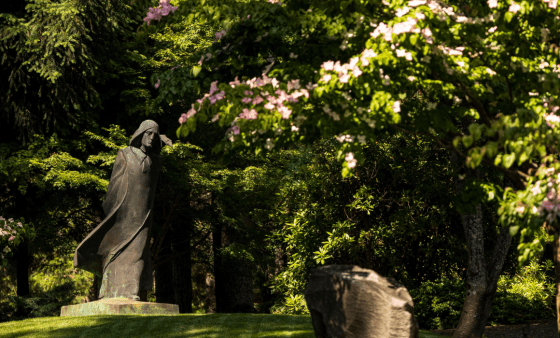
Reflections on St. Benedict
The Saint Martin’s community celebrates St. Benedict's Day on March 21. As a Benedictine institution, we honor this day to commemorate the values of hospitality, community and lifelong learning that St. Benedict instilled. His teachings inspire us to foster a welcoming environment where all can thrive.
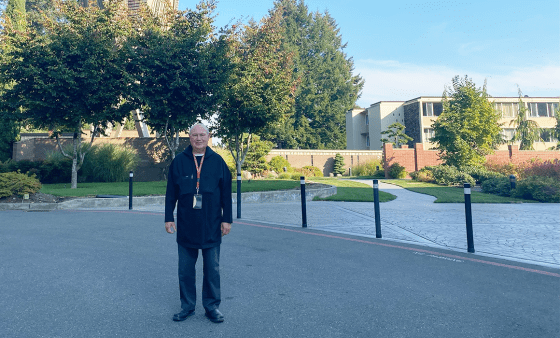
Humans of Saint Martin's: Br. Ramon Newell, O.S.B.
You may think you are going to do one thing, but you wind up doing something else that you are more suited for, so be open to the possibilities.
Apply to Saint Martin's
Ready to learn how you will make a positive difference in your lives and in the lives of others through the interaction of faith, reason, and service?

The First mission in Bucks County was established in 1744 By Father Schneider, a Jesuit missionary. The Jesuit priests ministered to the spiritual needs of the Catholics along the Delaware River from a chapel at Haycock Run.
Bishop Francis Patrick Kenrick, head of the newly formed Diocese of Philadelphia, established a second mission in Lambertville, NJ, which provided regular services for all surrounding communities.
The Diocese of Newark (NJ) was established in 1853 which separated Lambertville from the religious jurisdiction of Philadelphia. New Hope Catholics had “lost” their parish (St. John the Evangelist) but for 27 more years continued to walk across the bridge to Lambertville to attend services. At that time, the two newest parishes in Bucks County were quite a distance away (Bristol and Doylestown).
In the Catholic community of New Hope, in 1880, formed a committee representing 25 families who petitioned then-Archbishop James F. Wood to build a church on their “side of the Delaware”. The request was denied, and the petitioners were told that their families would be a “mission church” of the new St. Andrew parish in Newtown. Services w ere conducted in New Hope twice a month.
This situation was not to last for too long, in 1883 Father Henry Stommel (known as the official church builder of Bucks County–he had overseen the construction of 4 churches), then pastor of St. Mary Parish in Doylestown (now known as Our Lady of Mount Carmel), envisioned his fifth Church in New Hope. On April 8th, he collected $400 from the New Hope congregation to purchase the four-acre parcel on which the present-day Church stands. Parishioners began clearing the land and construction of the foundation (40′ x 70′) began the next year using local stone that parishioners hauled up the hill.
In March of 1885, Father Stommel purchased the five-acre strip of land adjoining the original parcel for use as a parish cemetery. On May 3rd of the same year, the cornerstone of St. Martin of Tours was laid. The church was subsequently dedicated and consecrated on September 17th, 1885 by Archbishop Patrick Ryan. It was a glorious day for the persistent New Hope Catholics.
The first substantial change to the interior of the church occurred in early 1910 during the time when Father Hasson was the pastor. A metal fire-resistant shield was installed to cover the interior walls and ceiling. Then the interior saw little change until the early 1960s when a complete renovation was undertaken under the direction of the renowned wood craftsman, George Nakashima. In 1993, the interior of the church was once again completely renewed respecting the simplicity of the past with the beauty and comfort of the new. The extensive renovations were prompted by the necessity of removing the church ceiling to repair major structural damage to huge support beams, which had severely deteriorated due to environmental conditions and old age.
The exterior of the church has changed only slightly over the years. Under Father Hasson, a covered bridge was erected that connected the rectory with the church. This bridge was later removed. During the renovations of 1993, a larger, safer, and more aesthetically pleasing outside foyer was added to the main entrance of the church, along with two statues. A wooden ramp to the sacristy and two entrances to the hall below the church were constructed. Additional parking was added. Drainage was improved, and the grounds were landscaped and lighted properly.
St. Martin of Tours Parish congregation is now over 1100 families and growing by about 10% per year. We opened our new facilities in December of 2000. Our school opened in September of 2001 and now acts as the Parish Life Center. These new facilities are located on 10 acres of parish-owned land off PA Route 179 in New Hope (adjacent to the Staples/CVS shopping center).
Saint Martin Of Tours Church
1 Riverstone Circle
New Hope, PA 18938
Mass Sc hedule
Saturday - 9 AM & 5:30 PM
(5:30 PM Mass will be live-streamed)
Sunday - 8:30 AM & 11:00 AM
Mon., Weds., Fri., - 9:00 AM
Tuesday - 7:00 PM
(No Mass On Thursday)
Confessions are heard 30 minutes before the weekend and Tuesday Masses.
Office Hours
Mon. - Fri. 9 AM - 5 PM
Phone: 215-862-5472
Fax: 215-862-1829
E-Mail: info@saintm artinoftours.org
Vision Statement
Saint Martin of Tours Parish is a Eucharistic Community striving to be disciples of Jesus Christ. We nurture and encourage each other and all who join us as we grow spiritually through acts of faith, hope, and love.
Parish Staff
Rev. Fred Kindon, Pastor
Deacon Peter Niche, Deaco n
[email protected] Mr. Alex Bennett, Parish Services Director
Mrs. Colleen Jones, Business Manager
[email protected] Mr. Robert Lynn, Facilities Manager
Mrs. Amanda Runkle, Office Administrator

The Shrine of St. Martin of Tours
639 S. Shelby Street Louisville, Kentucky 40202
June 22, 2024 | Mass Times: 2:00 PM
You may also like

The Portrait of a Saint

DAY OF RECOLLECTION | June (Year B)

On the Feast of Corpus Christi | A Homily
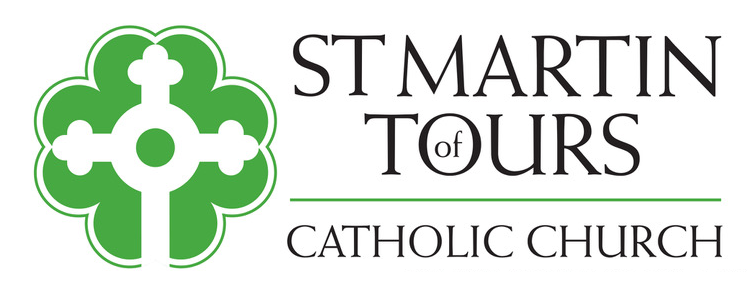
- Faith Formation
- Altar Society
- Community Service
- Knights of Columbus
- More…
- My Own Church
- Online Giving
- Recorded Masses
Our Patron Saint
St. Martin of Tours Catholic Church | Martinsville, Indiana
St. Martin of Tours
Saint Martin of Tours was born in Savaria, Pannonia in either the year 316 or 336 AD in the region that is modern-day Hungary. His father was a tribune, which is a high-ranking officer in the Imperial Horse Guard. Martin and his family went with his father when he was assigned to a post at Ticinum, in Northern Italy. It is here that Martin would grow up.
Just before Martin was born, Christianity was legalized in the Roman Empire and the bloody persecution of Christians soon came to an end. It was not the official religion of the State, but it could be practiced and proclaimed openly. The Gospel message soon flourished in ancient Rome, transforming the empire. Martin’s parents were pagans, but at the age of 10, Martin chose to respond to the call of the Gospel and become a Christian.
At the age of fifteen, Martin was required to follow his father into the cavalry corps of the Roman military. By the time he was 18, Martin is believed to have served in Gaul, and eventually Milan and Treves. Scholars think he served as part of the emperor’s guard.
As a young soldier, Martin encountered a beggar in Amiens. The beggar was unclothed and it was very cold. Martin removed his cloak and, with his sword, he cut the cloak in half. He gave half to the beggar and dressed himself in the remnant. That night, Martin had a vision in which Christ appeared to him. The vision spoke to him, “Martin, a mere catechumen has clothed me.” A catechumen is one who is being instructed in the Christian faith. In the early centuries of Christianity, that was a long process of instruction – and Martin was deeply dedicated to it.
About the age of 20, Martin made clear to his superiors that he would no longer fight, following his formed Christian conscience. He refused his pay prior to a battle and announced he would not join in the combat. He became the first recognized conscientious objector in recorded history. His proclamation occurred before a battle near the modern German city of Worms. His superiors accused him of cowardice and ordered that he be imprisoned. Martin offered to demonstrate his sincerity by going into battle unarmed. This was seen as an acceptable alternative to jailing him, but before the battle could occur, the opposing army agreed to a truce and no conflict took place. Martin was subsequently released from military service.
Now out of the military service, Martin could fully dedicate himself to service of Jesus Christ and the Church. He traveled to Tours where he began studying under Hilary of Poitiers, who is now recognized as a doctor of the Church. Martin’s studies lasted until Hilary was forced into temporary exile, likely because of his refusal to participate in a political dispute.
Martin then traveled to Italy. According to one account, Martin was confronted by a highwayman and led him to faith in Jesus Christ. Another account tells of Martin confronting the Devil. While on this journey, Martin had a vision which compelled him to return to his mother in Pannonia. He did so and led his own mother into the Christian faith. Martin attempted to persuade his father to embrace faith in Jesus Christ, but as far as we know, his father refused.
After bringing his mother to the Church, Martin then turned to confronting a growing heresy which was afflicting the faithful and sowing confusion. He became involved in countering the Arian heresy, which denied the divinity of Jesus Christ. The reaction against him was so violent from the Arian leaders that he was compelled to flee. Martin took up residence on an island in the Adriatic where he lived as a hermit for a time.
Martin’s teacher Hilary returned to Tours from temporary exile in 361 so Martin traveled there to work and study. Hilary gave Martin a small grant of land where he and his disciples lived.
Martin established a monastery which would be inhabited by the Benedictines. Established in 361, the Liguge Abbey was destroyed during the French Revolution, then reestablished in 1853. The abbey remains to this day. From the site of his abbey, Martin worked to bring people to faith in Jesus Christ and Baptism into His Church in the surrounding areas. He was an extraordinary evangelist.
In 371, the city of Tours needed a new bishop and the people decided to call Martin to the office. Martin did not want the job so the people decided to trick him into the office. The people insisted he was needed to administer to someone sick, so he came out as quickly as he could. He did not even bother to improve his appearance. When he learned it was a trick to make him a bishop, Martin actually tried to hide. He was quickly discovered and the people called him forward to be ordained to the office of Bishop. Even though he did not really want the office, he was ordained – and he became a holy and hardworking Bishop.
As a Bishop Martin established a system of parishes to manage his diocese. He made a point to visit each parish at least once per year. In addition to his appointed rounds, Martin combated paganism, particularly the Druid religion which was still prevalent at the time. He passionately and faithfully proclaimed the Gospel of Jesus Christ and won many to the Christian faith.
Yet, he longed for more prayer and wanted to pursue a monastic life. In the year 372 Martin established an abbey at Marmoutier so he could retreat there and live as a monk with the many disciples he had attracted.
In the following years, a heresy broke out in the church. An aesthetic sect called the Priscillianists after their leader, Priscillian, had developed in Spain and Gaul. The First Council of Saragossa condemned the heresy, but the Priscillians did not change they practices. This prompted one bishop, Ithacius of Ossonoba to petition the Roman Emperor Magnus Maximus to put him to death. Martin was opposed to the sentence of death, and was joined by Bishop Ambrose of Milan in his opposition. Martin traveled to Trier where the Emperor held court. Martin was able to persuade the Emperor to refrain from putting Priscillian and his followers to death. However, after Martin left, Ithacius persuaded the Emperor to change him mind again and Priscillian and his followers were executed in 385.
Martin was so upset by Ithacius, he refused to communicate with his fellow bishop until the Emperor pressured him to resume communicating with his colleague.
Martin died in Candes-Saint-Martin, Gaul in 397.
The Hagiographer Sulpicius Severus, knew Martin personally and wrote about his life. Many miracles and the casting out of demons were attributed to Martin during his lifetime. According to one account, Martin, while trying to win Druids to follow Jesus Christ and renounce their pagan beliefs, was dared to stand in the path of a sacred tree that was being felled. Martin agreed and was missed by the falling pine, although standing right in its path. This was widely seen as miraculous and a symbol that the message he proclaimed about Jesus Christ was true. Many were converted to the Christian faith.
Veneration of St. Martin became popular in the Middle Ages, and was popular with the Frankish kings.
Saint Martin is the patron of the poor, soldiers, conscientious objectors, tailors, and winemakers. Many locations across Europe have also been placed under his patronage. His feast is on November 11. He commonly appears on horseback and is shown cutting his cloak in half with a sword.
- Daily Reading for Thursday, October ...
- Today's Reading
- The Mysteries of the Rosary
St. Martin of Tours
- Catholic Online
- Saints & Angels

Author and Publisher - Catholic Online Printable Catholic Saints PDFs Shop St. Martin of Tours
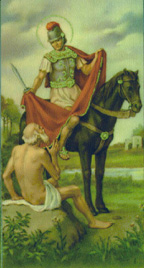
Saint Martin of Tours was born in in Savaria, Pannonia in either the year 316 or 336 AD. That region is what is today the nation of Hungary. His father was a tribune, which is a high-ranking officer in the Imperial Horse Guard. Martin and his family went with his father when he was assigned to a post at Ticinum, in Northern Italy. It is here that Martin would grow up.
Just before Martin was born, Christianity was legalized in the Roman Empire and the bloody persecution of Christians soon came to an end. It was not the official religion of the State, but it could be practiced and proclaimed openly. The Gospel message soon flourished in ancient Rome, transforming the empire. Martin's parents were pagans, but at the age of 10, Martin chose to respond to the call of the Gospel and become a Christian.
At the age of fifteen, Martin was required to follow his father into the cavalry corps of the Roman military. By the time he was 18, Martin is believed to have served in Gaul, and also eventually Milan and Treves. Scholars think he served as part of the emperor's guard.
As a young soldier, Martin encountered a beggar in Amiens. The beggar was unclothed and it was very cold. Martin removed his cloak and with his sword, he cut it in half. He gave this half to the beggar and dressed himself in the remnant. That night, Martin had a vision in which Christ appeared to him. The vision spoke to him, "Martin, a mere catechumen has clothed me." A catechumen is one who is being instructed in the Christian faith. In the early centuries of Christianity, that was a long process of instruction - and Martin was deeply dedicated to it.

St. Benedict Door Hang 15% off
About the age of 20, Martin made clear to his superiors that he would no longer fight, following his formed Christian conscience. He refused his pay prior to a battle and announced he would not join in the combat. He became the first recognized conscientious objector in recorded history. His proclamation occurred before a battle near the modern German city of Worms. His superiors accused him of cowardice and ordered that he be imprisoned. Martin offered to demonstrate his sincerity by going into battle unarmed. This was seen as an acceptable alternative to jailing him, but before the battle could occur, the opposing army agreed to a truce and no conflict took place. Martin was subsequently released from military service.
Now out of the military service, Martin could fully dedicate himself to service of Jesus Christ and the Church. He traveled to Tours where he began studying under Hilary of Poitiers, who is now recognized as a doctor of the Church. Martin's studies lasted until Hilary was forced into temporary exile, likely because of his refusal to participate in a political dispute.
Martin then traveled to Italy. According to one account, Martin was confronted by a highwayman and led him to faith in Jesus Christ. Another account tells of Martin confronting the Devil. While on this journey, Martin had a vision which compelled him to return to his mother in Pannonia. He did so and led his own mother to faith in Jesus Christ. Martin attempted to persuade his father to embrace faith in Jesus Christ, but as far as we know, his father refused.
After bringing his mother to the Church, Martin then turned to confronting a growing heresy which was afflicting the faithful and sowing confusion. He became involved in countering the Arian heresy, which denied the divinity of Jesus Christ. The reaction against him was so violent from the Arian leaders that he was compelled to flee. Martin took up residence on an island in the Adriatic where he lived as a hermit for a time.
Martin's teacher Hilary returned to Tours from temporary exile in 361 so Martin traveled there to work and study. Hilary gave Martin a small grant of land where he and his disciples lived.
Martin established a monastery which would be inhabited by the Benedictines. Established in 361, the Liguge Abbey was destroyed during the French Revolution, then reestablished in 1853. The abbey remains to this day. From the site of his abbey, Martin worked to bring people to faith in Jesus Christ and Baptism into His Church in the surrounding areas. He was an extraordinary evangelist.

Want New Prayers?
In 371, the city of Tours needed a new bishop and the people decided to call Martin to the office. Martin did not want the job so the people decided to trick him into the office. The people insisted he was needed to administer to someone sick, so he came out as quickly as he could. He did not even bother to improve his appearance. When he learned it was a trick to make him a bishop, Martin actually tried to hide. He was quickly discovered and the people called him forward to be ordained to the office of Bishop. Even though he did not really want the office, he was ordained - and he became a holy and hardworking Bishop.
As a Bishop Martin established a system of parishes to manage his diocese. He made a point to visit each parish at least once per year. In addition to his appointed rounds, Martin combated paganism, particularly the Druid religion which was still prevalent at the time. He passionately and faithfully proclaimed the Gospel of Jesus Christ and won many to the Christian faith.
Yet, he longed for more prayer and wanted to pursue a monastic life. In the year 372 Martin established an abbey at Marmoutier so he could retreat there and live as a monk with the many disciples he had attracted.
In the following years, a heresy broke out in the church. An aesthetic sect called the Priscillianists after their leader, Priscillian, had developed in Spain and Gaul. The First Council of Saragossa condemned the heresy, but the Priscillians did not change they practices. This prompted one bishop, Ithacius of Ossonoba to petition the Roman Emperor Magnus Maximus to put him to death. Martin was opposed to the sentence of death, and was joined by Bishop Ambrose of Milan in his opposition. Martin traveled to Trier where the Emperor held court. Martin was able to persuade the Emperor to refrain from putting Priscillian and his followers to death. However, after Martin left, Ithacius persuaded the Emperor to change his mind again and Priscillian and his followers were executed in 385.
Martin was so upset by Ithacius, he refused to communicate with his fellow bishop until the Emperor pressured him to resume communicating with his colleague.
Martin died in Candes-Saint-Martin, Gaul in 397.
The Hagiographer Sulpicius Severus, knew Martin personally and wrote about his life. Many miracles and the casting out of demons were attributed to Martin during his lifetime. According to one account, Martin, while trying to win Druids to follow Jesus Christ and renounce their pagan beliefs, was dared to stand in the path of a sacred tree that was being felled. Martin agreed and was missed by the falling pine, although standing right in its path. This was widely seen as miraculous and a symbol that the message he proclaimed about Jesus Christ was true. Many were converted to the Christian faith.

This Father's Day light a Free Prayer Candle
Veneration of St. Martin became popular in the Middle Ages, and was popular with the Frankish kings.
Saint Martin is the patron of the poor, soldiers, conscientious objectors, tailors, and winemakers. Many locations across Europe have also been placed under his patronage. His feast is on November 11. He commonly appears on horseback and is shown cutting his cloak in half with a sword.
- ← St. Martin Tinh
- St. Martius →
St. Martin of Tours Fun Facts

More Saints
- Trending Saints:
- St. Faustina Kowalska
- St. Francis of Assisi
- St. Michael the Archangel
- Bl. Laura Vicuna

Find Saints
- More Saints & Angels

Join the Movement When you sign up below, you don't just join an email list - you're joining an entire movement for Free world class Catholic education.

- Mysteries of the Rosary Mysteries of the Rosary
- St. Faustina Kowalska St. Faustina Kowalska
- Litany of the Blessed Virgin Mary Litany of the Blessed Virgin Mary
- Saint of the Day for Wednesday, Oct 4th, 2023 Saint of the Day for ...
- Popular Saints Popular Saints
- St. Francis of Assisi St. Francis of Assisi
- Bible Bible
- Female / Women Saints Female / Women Saints
- 7 Morning Prayers you need to get your day started with God 7 Morning Prayers you need to ...
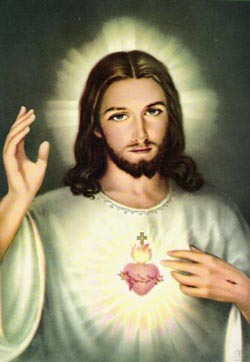
The Most Sacred Heart of Jesus: Divine Refuge of Love and Happiness
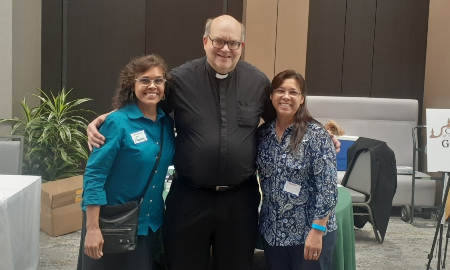
The Priesthood - It's Never Too Late Follow God's Call!
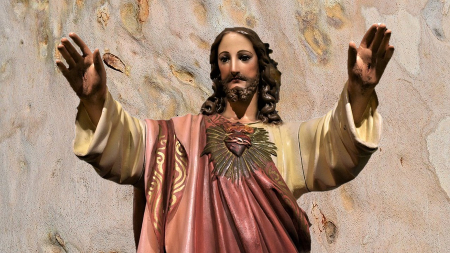
June is Dedicated to the Sacred Heart of Jesus
A message from us to all faithful catholics, so many people are hungry, daily catholic.

- Daily Readings for Thursday, June 06, 2024
- St. Norbert: Saint of the Day for Thursday, June 06, 2024
- Prayer for Travelers: Prayer of the Day for Thursday, May 09, 2024

Auction Alert, Place Bid Now
Saints & angels.

- Saints Feast Days
- Female Saints
- Saint of the Day
- Browse Saints
- Popular Saints
- Patron Saints
- Saint Fun Facts
- Martyr Saints

- Mysteries of the Rosary
- Stations of the Cross
- Guide for Confession
- Prayer of the Day
- Browse Prayers
- Popular Prayers
- Holy Rosary
- Sacraments of the Catholic Church
- More Prayers
- Daily Readings
- New Testament
- Old Testament
- Books of the Bible
- Ten Commandments
More of Catholic Online
- Lent & Easter
- Advent & Christmas
- Catholic Encyclopedia
- All of Catholic Online

- Privacy Statement
- Terms of Service
Copyright 2024 Catholic Online. All materials contained on this site, whether written, audible or visual are the exclusive property of Catholic Online and are protected under U.S. and International copyright laws, © Copyright 2024 Catholic Online. Any unauthorized use, without prior written consent of Catholic Online is strictly forbidden and prohibited.
Catholic Online is a Project of Your Catholic Voice Foundation, a Not-for-Profit Corporation. Your Catholic Voice Foundation has been granted a recognition of tax exemption under Section 501(c)(3) of the Internal Revenue Code. Federal Tax Identification Number: 81-0596847. Your gift is tax-deductible as allowed by law.
We ask you, humbly: do not scroll away
To all our readers, please don't scroll past this..


9 Best Things To Do In St. Maarten During A Day In Port
W hile I had visited St. Maarten many times on cruises, I had never left for a cruise from this port until I sailed with Windstar Cruises. My husband Eddie and I flew into St. Maarten and used the ship’s transfer to shuttle us to a hotel; we wanted to be sure to dodge any unexpected change of travel plans before cruising the following afternoon. There was time to experience a little more of the dual-nation island than in the past, which was a nice change of pace. Here is what we found to be the best things to do in St. Maarten during a day in port.
St. Maarten, Dutch ( Netherlands ), and St. Martin, French, make up the two-nation, 37-square-mile island in the Lesser Antilles Archipelago.
I was hosted by Windstar Cruises on a press trip. All reviews and opinions are 100 percent unbiased and my own.
1. See The Marigot Waterfront
St. Maarten’s capital, Marigot, has many boutiques and quaint outdoor French cafes, bistros, and sushi restaurants. Colonial buildings, plus some contemporary, are situated between pastel-colored shopping arcades.
Shopping and dining — named some of the best in the Caribbean — are primo at this picturesque location. You’ll find Rosemary’s Seafood and Creole Cuisine, a restaurant written about in major magazines and books, such as Travel + Leisure and Lonely Planet .
Pro Tip: Don’t miss the sculpture of the Market Woman, done by local artist Martin Lynn and dedicated to the St. Martin Market Women. It is one of St. Martin’s most recognized works of art.
2. Arrive Early
Arrive on the island of St. Maarten — often written Sint Maarten — a day before your cruise, so you have a chance to unwind and enjoy the starting point a bit. We stayed at the Homage Hotel & Residences , a modern hotel on the French side, St. Martin, with a huge bedroom and well-lit bathroom. Tropical paintings, vibrant colors, and accent pieces really made our room pop. A small patio with lounge chairs was right outside our room through sliding glass doors, which led right down to the sand. We were steps from the beach.
The Homage Hotel had a stunning infinity pool and plenty of space to wander with social distance. Be prepared to feel like you’ve been transported somewhere amazing during your stay here. Palm trees were plentiful, and the entire resort was covered with unique artwork and sculptures. The Homage had an onsite restaurant and bar, which was good since nothing was very close to us. Eddie and I thoroughly enjoyed the tropical vibe, cute spots to hang out along the waterfront, and the chill-out Ibiza music playing throughout.
3. Explore St. Martin
The french side of the island.
St. Martin has a totally different feel and vibe from its counterpart, St. Maarten. Eddie and I had a great night out here with new friends we’d made at the hotel who were also going on our cruise. We took a cab to Marigot for dinner at Be Kool . The restaurant sat on the waterfront and was in an excellent location. We each had a bowl of French onion soup, luscious and rich. My main course was a fantastic pork tenderloin with mushroom sauce.
You won’t want to miss the high-end retail and fancy designer shops in the daytime and the open-market bazaar in St. Martin. There are also vendor stalls with fresh produce, locally-made jewelry, and clothing to meet your shopping needs.
Pro Tip: Please note that this area, like much of the United States, is experiencing a worker shortage, so be prepared to spend 2+ hours at dinner.
4. Take An Island Tour Of St. Martin
We had quite a bit of time to kill after disembarking our Windstar Cruises ship before heading to the airport, so we signed up for the 3-hour, post-cruise island tour. Our guide was fantastic — full of knowledge and fun, relatable facts, plus cheery and happy-go-lucky. We made a loop of the entire island and had several photo-ops and free time opportunities.
The group spent 25 minutes or so strolling around Marigot at our own pace. Use this time to grab a French pastry, baguette, or great cup of coffee. We had around 45 minutes to explore downtown Phillipsburg . This is where many large cruise ships come into port, so there are plenty of things to see and do. We found an Indian restaurant on a side street off Front and had a delicious meal. For a bonus, there was free WiFi and the owners were very gracious for our business.
Pro Tip: Yacht racing is popular in St. Martin — you will see plenty of pricey vessels worth a photo.
5. Downtown Phillipsburg
Downtown Phillipsburg has 16 blocks of nearly everything you could wish to purchase duty-free, mostly jewelry, clothing, electronics, and shoes. I found the charming little courthouse to be a nice change in scenery, looking like it was transported from New England .
Voorstraat has casinos — slots, blackjack, and roulette — and duty-free shops, plus a Hard Rock Cafe that unfortunately closed and broke my heart as I was craving a juicy cheeseburger.
On the beach side of Great Bay, you’ll find the cool boardwalk, an excellent place to enjoy the salty air, people-watch, and buy souvenirs. Popular souvenirs include magnets, postcards, tote bags, rum, and tropical clothing. It was Christmas on our visit, and Heineken had a Christmas tree display for a big event that topped all holiday decorations for the whole trip.
Pro Tip: There are some fun murals to see around downtown Phillipsburg, too.
6. Phillipsburg Marketplace
Front Street, which runs along the eastern Caribbean Sea’s waterfront in Phillipsburg, the Dutch side of the island, is lined with flags, street lamps, and pure white sand beaches. Market stalls, or kiosks, offer all sorts of handmade goods at the Phillipsburg Marketplace, such as license plates, jewelry, toys, and t-shirts.
If tablecloths excite you as they do us, check out Mr. Tablecloth Too , with custom-made pieces, placemats, and table runners. Lace is an artform on this island, and the delicate pieces make one-of-a-kind souvenirs.
Pro Tip: While prices are negotiable, I encourage you to not barter and support the locals who rely on tourism to put food on their tables.
7. Go Fishing
St. Maarten is a year-round fishing destination, so use your time to charter a boat and try it. Or even go deep-sea fishing, which is an option with Viator , a TripAdvisor company that I’ve used around the world. Sailfish and marlin are popular during the summer months, while kingfish, wahoo, and mahi-mahi are highly sought after.
8. Enjoy The Beaches
Cruise ships dock at A.C. Wathey Pier, in Dutch St. Maarten. It is referred to as the “St. Tropez of the Caribbean.”
St. Martin boasts the most famous beach on the island, Orient Beach. Expect frolicking sunbathers ; ladies in colorful clothing, selling over-priced goods and offering to braid your hair; and tasty, cosmopolitan restaurants on the beach with the best beef carpaccio you’ve ever tasted.
If you wish to enjoy a day at the beach, look no further. Bring some cash to reserve a lounge chair and umbrella, should you desire, and feast your eyes on the magical crystal blue water and often the athletic youngsters playing volleyball or chasing waves. Orient Beach is continually voted one of the world’s most beautiful beaches.
I will alert you that there is a clothing-optional beach, so be prepared. It is somewhat on the edge of Orient Beach and in the Club Orient section. Don’t expect big parties there or something MTV-worthy, as these are primarily people just dabbling in naturalism. Please do not use a camera, and respect their privacy.
While St. Martin has Orient Beach, St. Maarten has an exciting opportunity that is unmatched anywhere in the world. You can watch the airplanes land at Princess Juliana International Airport on Maho Beach. And by watching, I mean you can feel the force of the wind from the planes so strongly that you may need to brace yourself. Sandblasted is what they call it. The airport sits along the beach, with a mountain on the other side.
For a quieter option in St. Maarten, consider going to Mullet Bay Beach, perfect for snorkeling and enjoying water sports. Fun fact: The island has a whopping 37 beaches in total.
Pro Tip: Order a famous Sint Maarten Guavaberry Colada. This three-ingredient drink is made from Guavaberry liqueur (the island’s national liqueur), cream of coconut, and pineapple juice.
9. Go Horseback Riding
It’s always a thrilling opportunity to ride horses on the beautiful sandy beaches, so why not check off this bucket list activity while you are here?
For more Caribbean island getaways, check out these stories:
- Traveling To The Caribbean: A Complete Country-By-Country Guide For Visitors
- Our 7 Favorite All-Inclusive Resorts In The Caribbean 2022
- 4 Caribbean Destinations Where You Can Relax Like A Movie Star
This article originally appeared on TravelAwaits

- Caribbean Travel Advisor
- Advertising

Frontier Launches Eight New Nonstop Flights to Puerto Rico
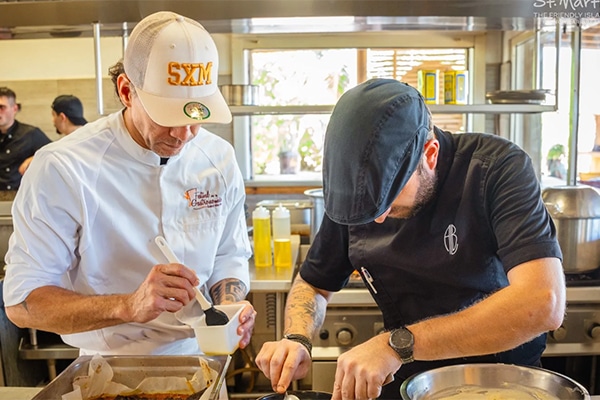
St Martin’s Must-Visit Culinary Festival Is Back This November
It just might be the best culinary destination in the Caribbean. And if you’ve been to the French side of St Martin, you know it’s a rather difficult proposition to challenge.
Three years ago, the destination doubled down on its gourmet pedigree and launched a new annual culinary event — and now the Festival de la Gastronomie, “The Saint Martin Gastronomy Festival,” is back for its fourth annual edition.
This year’s event runs from Nov. 11-22, with 10 days of vibrant events from mixology to cuisine and prix-fixe menus.
That’s along with a series of competitions, including a high school cooking event, a barbecue competition and a bartending competition, among others.
There’s also the popular Taste of Sunrise local brunch on the beach, along with a restaurateurs’ village, a collection of food trucks and a closing night featuring a lineup of international chefs.
It’s one of the most exciting foodie-focused events in the Caribbean, and yet another great reason to visit one of the Caribbean’s most fascinating travel destinations.
For more, visit the Saint Martin Gastronomy Festival .

From Belize to Grenada, 10 Little Caribbean Beach Resorts to Visit Right Now
There are different resorts for different vacations, different tastes, different moods. For some, there’s something delicious about a pint-sized, tiny Caribbean resort, where the emphasis is on the intimate, the serene. Where the soundtrack isn’t a piped-in DJ set, but […]
Marriott Is Opening Its New St Regis Resort In Aruba

It was more than a decade ago that Marriott opened its first-ever Ritz-Carlton resort in the Dutch Caribbean: the Ritz-Carlton, Aruba, which at the time was the island’s first true five-star resort. Fast forward to 2024, and Marriott is set […]
Curacao Travel Is Booming, With More Hotels, Added Flights and a New Energy

The colorful streets of Willemstad; the floating bridge; the all-day party at Mambo Beach; the endless possibilities at Jan Thiel. Curacao has always been one of the most diverse places to visit in the region. Now, travelers have finally started […]

Travel Leaders President John Lovell Talks Caribbean Tourism
Internova Travel Group’s Travel Leaders Group has a massive footprint in the travel industry, generating gross travel sales of almost $21 billion every year, through its consortia, host agency and its specialty agencies in everything from cruise to leisure. That […]
How to Fly to the Perfect Caribbean Beach

When it comes to the perfect beach, you know it when you see it. The brightness of the sand, the brilliance of the blue, that perfect permutation of palm trees dotting the shore. We’ve been to more Caribbean beaches than […]
Cancun Is Hilton’s Top Caribbean Summer Destination

One of the world’s top hotel companies has revealed its most popular Caribbean destination for the summer: Cancun. The Mexican Caribbean hotspot is the second-most popular destination worldwide on its network, according to a new Hilton report. Cancun came in […]
Sign up for Caribbean Journal's free newsletter for a daily dose of beaches, hotels, rum and the best Caribbean travel information on the net.

IMAGES
VIDEO
COMMENTS
Martin of Tours ( Latin: Martinus Turonensis; 316/336 - 8 November 397), also known as Martin the Merciful, was the third bishop of Tours. He has become one of the most familiar and recognizable saints in France, heralded as the patron saint of the Third Republic. He is the patron saint of many communities and organizations across Europe.
St. Martin of Tours ; Western feast day, November 11; Eastern feast day November 12) was the patron saint of France, father of monasticism in Gaul, and the first great leader of Western monasticism. Of pagan parentage, Martin chose Christianity at age 10. As a youth, he was forced into the Roman
Saint Martin of Tours is a Patron Saint of: Horses. Soldiers. South Africa. Saint Martin of Tours is often depicted as a soldier mounted on a horse sharing his cloak with a poor man. He became a monk and then a bishop, but he never lost his love for the poor. He spent a good deal of energy fighting for the Church, and for mercy toward heretics.
Death: 397. Author and Publisher - Catholic Online. Printable Catholic Saints PDFs. Shop St. Martin of Tours. Saint Martin of Tours was born in in Savaria, Pannonia in either the year 316 or 336 AD. That region is what is today the nation of Hungary. His father was a tribune, which is a high-ranking officer in the Imperial Horse Guard.
Martin was born in Italy to pagan parents but discovered Christianity as a teen and converted to it. He served in the army of ancient Gaul (now France) as a teen and young man. Through the years, Martin was persecuted for his Christian beliefs but remained faithful to his convictions. He often began relationships with pagans (like his parents ...
St. Martin of Tours. Both Saint Martin and Saint Nicholas are remembered for their heroic charity, both became famed wonder-working bishops, and both saved sailors from shipwreck. As we celebrate the feast day of Martin, November 11, we focus here on this saint whose fabled life notably started with the pity he showed a poor beggar by cutting ...
St. Martin of Tours. Share. St. Martin, called "the glory of Gaul," was born about the year 316 of pagan parents in Sabaria, Upper Pannonia, a province comprising northern Yugoslavia and western Hungary. His father was an officer in the Roman army who had risen from the ranks. While Martin was still a child, his father was transferred to a new ...
MARTIN OF TOURS. Feast: November 11. Bishop; born at Sabaria (today Steinamanger in German, or Szombathely in Hungarian), Pannonia (Hungary), about 316; died at Candes, Touraine, most probably in 397. In his early years, when his father, a military tribune, was transferred to Pavia in Italy, Martin accompanied him thither, and when he reached ...
St. Martin of Tours. On Nov. 11, the Catholic Church honors St. Martin of Tours, who left his post in the Roman army to become a "soldier of Christ" as a monk and later bishop. Martin was born ...
The Basilica of St. Martin is a Roman Catholic basilica dedicated to Saint Martin of Tours, over whose tomb it was built. It is located in Tours, France. [1] The first basilica was established here in the 5th century (consecrated in 471) on the site of an earlier chapel. [2] It was at first served by a community of monks under an abbot, the ...
St. Martin of Tours died on November 8, 397. His legacy lives on in his feast day, November 11, celebrated in many parts of the Christian world. He is the patron saint of soldiers, horses, riders, geese, and vintners, among other things, due to various legends and tales associated with him.
Saint Martin of Tours where new beginnings are possible. menu. SMT School; Bulletin; Charity and Solidarity Center; About. Finance and Pastoral Council; Staff; Faith Formation. PREP; RCIA; DSC_3250 (1) First Holy Communion . 8BDFC402-099E-41FB-ABA3-4BC08CE40DA3. Young Adult Ministry. Fellowship + Picnic. DSC_9831-3. Parish services.
WELCOME TO ST. MARTIN OF TOURS CATHOLIC CHURCH! Powered by CatholicWebsite.com | LoginCatholicWebsite.com | Login
St. Martin of Tours is also known for his miracles. He healed the sick, raised the dead, and even tamed wild animals. But despite these amazing feats, Martin remained humble and devoted to his faith. He lived a simple life, and he never sought fame or fortune. Today, St. Martin of Tours is remembered as a model of Christian virtue.
November 11: Saint Martin of Tours, Bishop—Memorial. 316 or 336-397 Patron Saint of beggars, cavalry, equestrians, geese, horses, innkeepers, Pontifical Swiss Guards, quartermasters, reformed alcoholics, soldiers, tailors, and winemakers Invoked against alcoholism and poverty Pre-Congregation canonization Liturgical Color: White. Quote:
Welcome to Saint Martin of Tours! St. Martin of Tours is a thriving Roman Catholic Church located in Cheviot, Ohio. We welcome all who search for Christ into our community of believers. Our Parish School provides a quality education in a Catholic environment to students in Kindergarten through Eighth Grade.
Biography of St. Martin of Tours. St. Martin was born in the year 316, in the city of Sabaria in what is now Hungary (at that time it was a Roman province). His father, a non-Christian, was a high officer in the Roman army. As a child Martin was left much in the care of the family servants, several of whom were Christians.
Location & Contact St. Martin of Tours 639 South Shelby Street Louisville, KY 40202 For more information please contact the Parish office. Phone (502) 582-2827 Fax (502) 582-1780 E-mail: Karen Schneider, Parish Secretary [email protected] Jackie Carlin, Business Manager [email protected] Cindy Heckmann ...
Saint Martin of Tours, patron saint of Saint Martin's University, figures prominently in the development of Christianity in fourth-century Europe. This gentle, humble servant of God, known best for helping those most in need, was chosen by the people of Tours as their spiritual leader, a role he reluctantly accepted. As bishop of Tours, he went on to establish about 3,500 churches.
During the Thursday and Friday rummage shopping days we will be selling baked goods. If you like to bake we would greatly appreciate your baking expertise. Baked items can be dropped off Wednesday between 9am and 6pm, or Thursday morning. Any questions call Ramona Bosch or the parish office. Item Link.
St. Martin of Tours Parish congregation is now over 1100 families and growing by about 10% per year. We opened our new facilities in December of 2000. Our school opened in September of 2001 and now acts as the Parish Life Center. These new facilities are located on 10 acres of parish-owned land off PA Route 179 in New Hope (adjacent to the ...
639 S. Shelby StreetLouisville, Kentucky 40202June 22, 2024 | Mass Times: 2:00 PM
CHEVIOT, Ohio (WKRC) - After more than 100 years in operation, a local school sounds the bell for the last time. Friday was the last day ever for St. Martin of Tours school in Cheviot.
St. Martin of Tours. Saint Martin of Tours was born in Savaria, Pannonia in either the year 316 or 336 AD in the region that is modern-day Hungary. His father was a tribune, which is a high-ranking officer in the Imperial Horse Guard. Martin and his family went with his father when he was assigned to a post at Ticinum, in Northern Italy.
Church of Saint Martin of Tours, Frómista. West façade in 2020. The Church of Saint Martin of Tours, in Frómista, province of Palencia, Spain, was built in the 11th century in Romanesque style. It is located on the Way of St. James to Santiago de Compostella .
Death: 397. Author and Publisher - Catholic Online. Printable Catholic Saints PDFs. Shop St. Martin of Tours. Saint Martin of Tours was born in in Savaria, Pannonia in either the year 316 or 336 AD. That region is what is today the nation of Hungary. His father was a tribune, which is a high-ranking officer in the Imperial Horse Guard.
St. Maarten, Dutch (Netherlands), and St. Martin, French, make up the two-nation, 37-square-mile island in the Lesser Antilles Archipelago.I was hosted by Windstar Cruises on a press trip. All ...
Three years ago, the destination doubled down on its gourmet pedigree and launched a new annual culinary event — and now the Festival de la Gastronomie, "The Saint Martin Gastronomy Festival ...
About GreatSchools. The GreatSchools Summary Rating is based on several metrics. Zillow has 1 photo of this $309,250 4 beds, 3 baths, 2,154 Square Feet single family home located at 105 Martin Anderson St, Warner Robins, GA 31088 built in 2024. MLS #175194.